Ирод Великий — мифы и реальность
Содержание:
- Личность Ирода
- Вифлеемские младенцы: по ту сторону мифа
- Великий строитель
- Семейная жизнь
- Иоанн Креститель
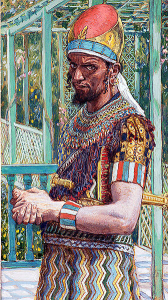 Царь Ирод является противоречивой личностью. После смерти он был назван историками «Великим», хотя при жизни он сам себя так не называл. Его жизнь прошла в знаковых местах. Ирод родился в Ашкелоне, а умер в Иерихоне. Место его погребения считается крепость Иродион, см. раздел III.
Царь Ирод является противоречивой личностью. После смерти он был назван историками «Великим», хотя при жизни он сам себя так не называл. Его жизнь прошла в знаковых местах. Ирод родился в Ашкелоне, а умер в Иерихоне. Место его погребения считается крепость Иродион, см. раздел III.
Ирода справедливо признают одним из самых влиятельных царей. Он правил Иудеей в течение символического срока — 33 года. Именно тогда закладывались предпосылки христианства. Некоторые исследователи не исключают, что Иисус Христос мог родиться при жизни Ирода. Именно во времена его правления на иудейской земле прекратилось кровопролитие и воцарился мир, строились новые города и крепости, а также укреплялись старые.
Ирод был иудомеем (по национальности), его дед принял иудаизм. Идумея была соседним с Иудеей государством и была населена идумеями (едомитянами) со второй половины II-го тысячелетия до нашей эры. Столицей Идумеи был расположенный на знаменитой 30-й параллели город Петра, который часто называют розовым. Примечательно, что розовый цвет образуется при смешивании красного и белого. См. ниже о главной тайне красно-белой короны египетских фараонов и Деда Мороза.
В конце II века до нашей эры Идумея была завоевана иудейским царем Иоанном Гирканом I из династии Хасмонеев. В результате все его население было обращено в иудаизм. Это единственный в истории случай носильного обращения в эту религию целого народа. Дед Ирода был тоже вынужден принять иудаизм.
Иудомеи всегда враждовали с иудеями, хотя были родственными племенами. Их общими основателями были два родных брата, давшие начало каждому народу. Основателем Идумеи считается Исав (Эдом) — сын библейского патриарха Исаака, брат Иакова. Много внимания уделяется Исаву в Аггаде — талмудической литературе, содержащей афоризмы, рассказы, исторические предания и поучения религиозно-этического характера. Возникновение Аггады относится ко II веку до нашей эры.
Первая столица с именем Агаде была на Нибиру, в её честь назвали столицу и государство Аккад в Месопотамии. Именно аккадский язык стал прародителем всех семитских языков, включая древнееврейский. Аккад ушел с исторической сцены примерно в 2200 году до нашей эры.
Исходя из иудомейского происхождения Ирода, его власть ставили под сомнение некоторые отпрыски из древних иудейских родов, но ничего не могли сделать, т.к. за Иродом и его семьей стояла военная мощь Римской империи. Отец Ирода был близким другом Юлия Цезаря и главным министром Иудеи, которая тогда была римской провинцией. Матерью Ирода была набатейская принцесса с интересным именем Кипра, из вышеуказанного города Петра.
Ирод был рожден в привилегированном мире и с детства был окружен известными людьми Рима, Египта и Ближнего Востока. Его дед и отец общались с Помпеем, Юлием Цезарем, Марком Антонием, Октавианом Августом, Клеопатрой, Брутом, Кассием, которые были в доме частыми гостями.
Французский художник Джеймс Тиссо, написавший в 1886 году Ирода Великого (см. выше) достаточно интересно изобразил его головной убор. По сути – это отражение союза Солнца и Луны. Передняя часть короны — красный цвет, Солнце (Ра) как на гербе Татарстана. Задняя часть короны по форме и цвету в ночном небе отражает Луну. Известно влияние на развитие монотеистических религий лунного божества по имени Син. Многое в этой короне кисти Тиссо подчеркивает идеи, которые отражались в головных уборах фараонов Египта, возникшего задолго до Иудеи.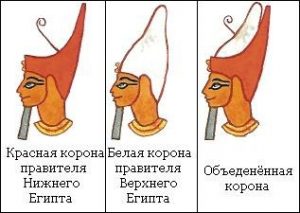
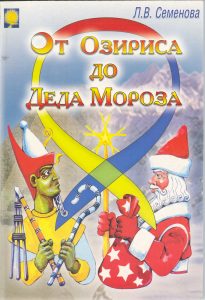
С высшей перспективы, объединённая красно-белая корона отражала объединение Духа и Материи – Вселенскую Игру Интеграции Полярностей, выразившееся на физическом плане в объединении Нижнего и Верхнего Египта примерно 5000 лет назад. В наше время эта мистерия продолжается в Великом Устюге, ставшим Родиной Деда Мороза, см. «Новый год начинается с Нибиру».
II. Вифлеемские младенцы: по ту сторону мифа
Благодаря составителям Евангелия от Матфея и многим европейским художникам, воздействовавших на воображение современников, образ Ирода стал синонимом детоубийцы. Он не был первым, кто расправился с собственными детьми, ради сохранения власти. Борьба детей с отцами – отличительная черта всех монархий. Убивали своих детей даже правители, которых впоследствии канонизировали. Государственные заслуги всегда ставились на первое место. Ироду повезло меньше всех благодаря Евангелию от Матфея, согласно которому он приказал убить в Вифлееме всех детей, младше двух лет, чтобы якобы обезопасить свой трон.
Нет смысла пересказывать эту всем известную историю. Давно известно мнение авторитетных исследователей. Самый главный аргумент в пользу невиновности Ирода – это его смерть за 4 года до официального рождения Иисуса Христа. Не мог же он отдавать приказы из царства мертвых!
Есть и другие вопросы при буквальном чтении Евангелия от Матфея:
- Иисус родился в Вифлееме, но его родители могли переехать из Вифлеема в другой город. Зачем Ироду так рисковать и приказывать убить младенцев этого города?
- Евангелие говорит, что для спасения сына Иосиф и Мария покинули Вифлеем и отправились в Египет. Все дороги тогда охранялись, их передвижение не могло остаться незамеченным. Никто их не преследовал, хотя младенец имел возраст, который указывал Ирод для избиения. В действительности, во исполнение царского указа они были бы достаточно быстро пойманы солдатами. Об их исчезновении с младенцем стало бы быстро известно властям от соседей, которым грозило бы в противном случае суровое наказание.
- В бегстве святого семейства в Египет говорится о других детях этой семьи, кроме Иисуса. Очередная подсказка или то, что составители Нового Завета не смогли исключить из Евангелий?
- В Новом Завете, часто отображают совершенно разные точки зрения на рождение и детство Иисуса. Нет исторических записей, подтверждающих инцидент с Вифлеемскими младенцами. Даже известный своими трудами еврейско-римский историк Иосиф Флавий, живший в первом веке, ничего не говорит об указе Ирода убить младенцев. При этом, Иосиф Флавий подробно описывает жизнь и чувства Ирода. Материалы он черпал в трудах Николая Дамасского, который был главным министром Ирода и его придворным историком.
- По свидетельству Иосифа Флавия, Ирод приказал похоронить себя в построенном им Иродионе (см. раздел III), в 5 км. от Вифлеема. Если бы приписываемое ему избиение младенцев в этом городе было правдой, то он не решился быть похороненным рядом. Более того, Иродион – единственное место в мире, все еще носящее имя Ирода.
- Только Матфей или, писавшие от его имени, говорят об избиении Вифлеемских младенцев. В других трех Евангелиях этой истории нет. Этот существенный факт тоже подтверждает, что этого избиения никогда не было. В результате только одного и явно недостаточного свидетельства Ирод почти 2000 лет обвинялся в массовом детоубийстве, которое он не совершал, но из-за которого его имя стало нарицательным.
Существуют и явные статистические доказательства невозможности массового избиения по приказу Ирода младенцев в Вифлееме:
- Демографические данные о Палестине I века свидетельствуют о том, что Вифлеем был небольшой деревушкой, с населением от 300 до 1 000 человек. Количество детей, младше 2-х лет колебалось между 7 и 20. Отсюда, масштабная резня не могла иметь место, т.е. там просто не было столько младенцев.
- В Евангелие от Матфея не сказано, сколько детей было убито, однако поздние источники настаивают на больших цифрах – греческая православная церковь настаивает, что по приказу ирода было убито 14 000 мальчиков, сирийская утверждает о 64 000, авторы позднего Средневековья доводят цифру до 144 000. Эти цифры скорее выглядят символичными, чем реалистичными.
Если не принимать во внимание, что за образами ветхозаветных волхвов могли скрываться астрономические или иные события (персонажи), то возникают аналогичные критические вопросы: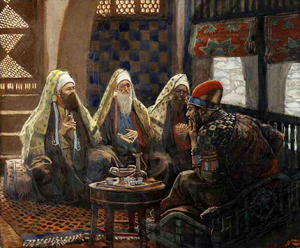
- В Евангелие от Матфея говорится, что с Востока пришли мудрецы (маги), которые (почему-то) остановились во дворце царя Ирода в Иерусалиме.
- Мог ли поверить хорошо образованный Ирод каким-то неизвестным старикам, якобы пришедшим в Иудею, чтобы поклониться новорожденному царю иудеев?
- Как они попали к Ироду? Нет никаких свидетельств о том, что он привечал у себя во дворце магов и астрологов, которых было множество в древнем мире.
- Матфей называет их волхвами. Однако, сколько их было на самом деле никто не знает. Считается, что их было три, по количеству даров – золото, ладан, смирна, но это только интерпретация. Сама Библия не говорит, сколько было волхвов.
- Не объясняется, почему их, живущих в другой стране, заинтересовало рождение нового царя иудеев. Знаком была звезда, которая, то вела их, то пропадала.
- Почему всесильный Ирод испугался младенца из забытой деревушки?
- Ирод наверняка знал, что религиозные иудеи верили в приход мессии. Источником этой веры были несколько псалмов, написанных от имени Соломона, где говорится о царе из рода Давида, который придет в Иерусалим и без военной силы прогонит ненавистных римлян. Однако, вряд ли Ирод был напуган. Военная машина римлян была непобедимой, а их достижения в культуре и архитектуре превосходили остальные народы.
- Ирод попросил волхвов вернуться и рассказать, где тот ребенок, которого они считали новым царем. Однако, волхвы не вернулись к Ироду. Как и родителям Иисуса, им во сне было дано предупреждение и домой они возвращались тайно. Получение информации от ангелов во сне часто встречается в Библии, но сама церковь очень настороженно относится к тем, кто видит различные сны и принимает информацию с тонкого плана похожими способами.
- Почему только волхвы из далеких стран могли определить родившегося мессию?
- Почему никто в Иудее не смог этого сделать, хотя были пророчества?
- Иисусу было порядка двух лет, когда пришли волхвы (согласно Библии). Неужели за это время никто не мог его рассмотреть?
Составители Евангелия от Матфея явно использовали информацию из мифа о солнечном герое, известном от Ближнего Востока до Индии. В нем рождение в пещере и преследование царем являются метафорами. Человек рождается в этом мире материальной пещеры. Он подвергается опасностям на пути своего служения, но, в конечном итоге, становится богочеловеком, т.е. раскрывает свой божественный потенциал, которым наделен каждый человек.
Все исследователи признают, что у Ирода был изысканный вкус и его наследие как великого строителя, противоречит закрепившейся за ним репутации детоубийцы. Ирод построил по всему царству более 20 крепостей. Связь между ними поддерживалась при помощи зеркал.
Иродион
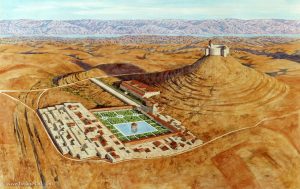 К югу от Вифлеема, где, как считается, родился царь Давид, а через тысячу лет Иисус, Ирод построил архитектурное чудо – Иродион, одинокий дворец в пустыне, который был шедевром его инженерного гения. Это предположительное место его захоронения и единственное место в мире, всё еще носящее его имя.
К югу от Вифлеема, где, как считается, родился царь Давид, а через тысячу лет Иисус, Ирод построил архитектурное чудо – Иродион, одинокий дворец в пустыне, который был шедевром его инженерного гения. Это предположительное место его захоронения и единственное место в мире, всё еще носящее его имя.
По сути, это было два дворцовых комплекса. Один на вершине горы, как в жерле вулкана. Второй у подножия этой горы, включавший огромный бассейн с беседкой в центре. Ирод жил и правил из Иродиона, но он был не единственным шедевром царя.
Масада
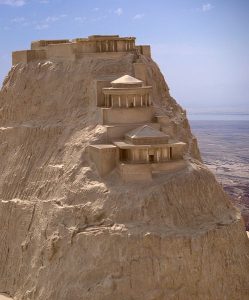 В 64 км к югу от Иродиона он построил на берегу Мертвого моря самый выдающийся из своих дворцов — Масаду, ставшим в наше время одной из святынь современного Израиля и его народа. Здесь принимают присягу военнослужащие, приезжают помолиться тысячи верующих. Башни неприступной цитадели поднимаются на 300 метров над пустыней. Трехэтажный дворец демонстрирует невиданное мастерство строителей. Ирод лично участвовал в каждом этапе проектировки и строительства здания. Это подтверждает, что он был очень образованным человеком. И снова это трудно соотнести с репутацией жестокосердного детоубийцы, данной ему в Евангелие от Матфея.
В 64 км к югу от Иродиона он построил на берегу Мертвого моря самый выдающийся из своих дворцов — Масаду, ставшим в наше время одной из святынь современного Израиля и его народа. Здесь принимают присягу военнослужащие, приезжают помолиться тысячи верующих. Башни неприступной цитадели поднимаются на 300 метров над пустыней. Трехэтажный дворец демонстрирует невиданное мастерство строителей. Ирод лично участвовал в каждом этапе проектировки и строительства здания. Это подтверждает, что он был очень образованным человеком. И снова это трудно соотнести с репутацией жестокосердного детоубийцы, данной ему в Евангелие от Матфея.
Масада находится недалеко от древнего города Арад. Ар – это древнее слово, означающее Внутреннее или Духовное Солнце. Не случайно, Аркаим, Арвад и др. В Араде был найден кувшин с именем Нармера — основателя первой династии царей в Египте. Ханаанский Арад достиг расцвета за 3000 до нашей эры. Еврейский город был здесь построен в период Первого Храма (с XI в. до нашей эры), который построил Соломон, сын царя Давида.
Стена Плача
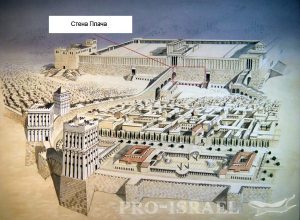 Исторические свидетельства говорят о том, что Ирод много сделал, чтобы снискать поддержку своих подданных. Одна из древнейших достопримечательностей Иерусалима – Стена Плача, к которой приезжают помолиться тысячи евреев со всего мира, является единственным останком великолепного здания, построенного Иродом. Этим детищем Ирода был Иерусалимский храм, который современники считали самым красивым зданием в мире. Ирод хотел завоевать умы и сердца еврейского населения, т.к в иудаизме допускается только храмовое сооружение, вся иудейская религия была сосредоточена вокруг этого храма.
Исторические свидетельства говорят о том, что Ирод много сделал, чтобы снискать поддержку своих подданных. Одна из древнейших достопримечательностей Иерусалима – Стена Плача, к которой приезжают помолиться тысячи евреев со всего мира, является единственным останком великолепного здания, построенного Иродом. Этим детищем Ирода был Иерусалимский храм, который современники считали самым красивым зданием в мире. Ирод хотел завоевать умы и сердца еврейского населения, т.к в иудаизме допускается только храмовое сооружение, вся иудейская религия была сосредоточена вокруг этого храма.
На строительстве этого храма было задействовано свыше 18 000 рабочих. На него было израсходовано денег больше, чем на любое другое здание за всю историю Иудеи. Ирод понимал, что очень важно не осквернить храм во время начатой им перестройки. Поэтому, выбрались самые достойные люди. Он сам принимал самое активное участие.
Однако, несмотря на это и постройку такого храма, многие из подданных Ирода по-прежнему его презирали. Корни этого презрения крылись в том, что он был назначен царем Иудеи римлянами, которых они считали оккупантами и что еще хуже, Ирод старался угодить им во всех отношениях.
Кесария
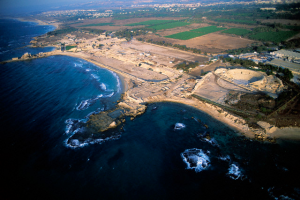 В своем следующем строительном проекте, Ирод сильно оскорбил религиозные чувства иудеев и свел на нет свои прежние усилия и заслуги. Новая стройплощадка находилась в 100 км на северо-запад от Иерусалима и стала известна как жемчужина Средиземноморья, это был город и морской порт. Однако, его название – Кесария оскорбило многих религиозных иудеев, т.к. было дано в честь римского императора Августа или Кесаря и она стала его столицей. В архитектуре города и его духе царили римский космополитизм (интернационализм) и глобализм римской цивилизации. Амфитеатр, ипподром, форум, бани, гигантский акведук для снабжения города пресной водой и т.д. Огромная гавань стала сложным инженерным сооружением того времени, на её строительстве Ирод применил последние достижения римлян.
В своем следующем строительном проекте, Ирод сильно оскорбил религиозные чувства иудеев и свел на нет свои прежние усилия и заслуги. Новая стройплощадка находилась в 100 км на северо-запад от Иерусалима и стала известна как жемчужина Средиземноморья, это был город и морской порт. Однако, его название – Кесария оскорбило многих религиозных иудеев, т.к. было дано в честь римского императора Августа или Кесаря и она стала его столицей. В архитектуре города и его духе царили римский космополитизм (интернационализм) и глобализм римской цивилизации. Амфитеатр, ипподром, форум, бани, гигантский акведук для снабжения города пресной водой и т.д. Огромная гавань стала сложным инженерным сооружением того времени, на её строительстве Ирод применил последние достижения римлян.
Кесария Приморская или Палестинская была построена на месте финикийского поселения за рекордно короткий срок — всего за 12 лет (с 22 по 10 г.г. до нашей эры). Городские улицы были расположены строго в римском порядке: Кардо – по направлению Север-Юг, Декаманус – Восток-Запад. Как полагается, на самой высокой точке города Ирод возвел храм, посвященный римскому императору и Риму, а не богу иудеев. Это оказалось не по душе многим религиозным иудеям, посчитавшим это оскорблением. Тем не менее, город приносил солидные доходы в казну Ирода и Рима. Большинство горожан, которых было порядка 30 тысяч, были сторонниками греко-римской культуры — римляне, греки, торговый люд с берегов Средиземноморья. Прообразом храма в Кесарии был храм Юпитера, построенный по приказу кесаря Августа в Баальбеке.
Кесария – Севастополь – Самария
Вышеуказанная Кесария у порта Себастия на средиземноморском побережье современного Израиля и Севастополь в Крыму (на черноморском побережье) имеют общее название.
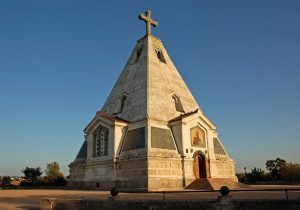 Название «Севастополь» состоит из двух греческих слов: «Себастос» (священный) и «полис» (город). Греческое слово «Себастос» представляет перевод латинского «Август» — титула римских императоров, изначально принятого императором Октавианом Августом. Именно на греческий (эллинский) манер Ирод назвал порт Себастос в городе Кесария. Более того, Ирод посвятил кесарю Августу не только на Средиземноморском побережье Иудеи, но и дарованный ему город Самарию (см. нижее) – бывшую столицу Израильского царства, которую он переустроил и назвал Себастос. Именно в царствование Ирода произошел последний расцвет древней Самарии. Морским воротами в Самарию служила указанная Кесария, также построенная Иродом. Благодаря его целеустремленности новый порт стал одним из крупнейших в Средиземноморье и составлял конкуренцию Александрии Египетской, стоящей на Нильском меридиане.
Название «Севастополь» состоит из двух греческих слов: «Себастос» (священный) и «полис» (город). Греческое слово «Себастос» представляет перевод латинского «Август» — титула римских императоров, изначально принятого императором Октавианом Августом. Именно на греческий (эллинский) манер Ирод назвал порт Себастос в городе Кесария. Более того, Ирод посвятил кесарю Августу не только на Средиземноморском побережье Иудеи, но и дарованный ему город Самарию (см. нижее) – бывшую столицу Израильского царства, которую он переустроил и назвал Себастос. Именно в царствование Ирода произошел последний расцвет древней Самарии. Морским воротами в Самарию служила указанная Кесария, также построенная Иродом. Благодаря его целеустремленности новый порт стал одним из крупнейших в Средиземноморье и составлял конкуренцию Александрии Египетской, стоящей на Нильском меридиане.
 Из римской крепости Себастополис на побережье Черного моря вырос современный город Сухум – столица Абхазии, на второй четверти герба которого изображены золотые остроконечные «шапки Диоскуров» с золотыми шестиконечными звездами. Сухум побратим с многими городами, включая такие знаковые как Грозный, Волгоград / Царицын / Сталинград и Архангельск, рядом с которым находятся Холмогоры — одно из древнейших русских поселений, стоящее на островах, описанных в священной книге индусов «Махабхарата». Недалеко от Сухума ушёл из этой жизни один из трёх Вселенских святителей — Иоанн Златоуст.
Из римской крепости Себастополис на побережье Черного моря вырос современный город Сухум – столица Абхазии, на второй четверти герба которого изображены золотые остроконечные «шапки Диоскуров» с золотыми шестиконечными звездами. Сухум побратим с многими городами, включая такие знаковые как Грозный, Волгоград / Царицын / Сталинград и Архангельск, рядом с которым находятся Холмогоры — одно из древнейших русских поселений, стоящее на островах, описанных в священной книге индусов «Махабхарата». Недалеко от Сухума ушёл из этой жизни один из трёх Вселенских святителей — Иоанн Златоуст.
Кесария. Сари — старинный город с богатой столичной историей на севере Ирана. Около 1469 года Сари посетил Афанасий Никитин, упомянувший его в своих путевых записках.
Самария
Самария — историческая область Израиля в центре Земли Обетованной, между Галилеей и Иудеей. В прошлом, ее центром был город Самария. Сегодня от него остались только руины, свидетельствующие о былом великолепии. В 875 — 722 г.г. до нашей эры, до завоевания ассирийцами, город Самария был столицей Израильского царства. Название города очень древнее и означает «Маленький Шумер». Как известно, Шумер был одной из колыбелей современной цивилизации, но ею и была Тартария, располагавшаяся на территории современной России. На Волге стоит русская Самара.
Будучи царем Иудеи, Ирод получил Самарию от первого римского императора Августа и отстроил город в эллинистическом духе. Он переименовал Самарию в Себастию, в честь Августа, которого греки называли Себастос. Построил в его честь внушительный храм, названный самой блестящей демонстрацией имперского культа. От брата императора Августа первый русский царь Иван Грозный вел происхождение рода Рюриковичей. На храме св. Николая в Старом Ваганькове, связанного с рождением Ивана Грозного, изображены 40 севайтийских мучеников.
Через Самарию проходил важный караванный путь из Дамаска в Египет. Считается, что здесь Иисус исцелил 10 прокаженных.
Самария была одним из значимых центров христианства, а ранние христиане верили, что в этом городе был похоронен Иоанн Креститель (см. раздел V).
Ирод считал Самарию (Себастию) своей базой для борьбы с Хасмонеями – священническим родом, чьи потомки более века правили Иудеей до Ирода. Хасмонеи происходили из поселения на границе Иудеи и Самарии. Самаритяне были верными союзниками Ирода. Он связал себя с этим городом особыми узами, женившись на самаритянке Малфаке. Родившиеся сыновья выжили и стали его наследниками. Прежних жён и детей Ирода постигла трагическая участь.
В 25 лет Ирод был назначен губернатором Галилеи, он женился на женщине по имени Дорида, которая родила ему сына. После возвращения из удачной военной компании, Ирод получил предложение жениться на прекрасной юной девушке иудейской благородной крови. Ее звали Мариам, а род почитался многими влиятельными семьями. Это давало Ироду определенную опору, т.к. он сам не был иудеем, которыми правил. Чтобы жениться на Мариам, он изгнал Дориду и их трехлетнего сына, но не порвал с ними окончательно.
Когда Ирод выехал из Иерусалима на встречу с римским императором Августом, чтобы дать обет верности, он оставил секретное распоряжение убить Мариам, если он не вернется живым. Ранее, сюзереном Ирода был Марк Антоний, враг Августа. Ирод не знал как отнесётся Август к нему т той поддержке, которую он оказывал Марку Антонию. Август подтвердил царский титул Ирода, но его брак с Мариам начал рушиться. Когда она узнала об этом распоряжении, то перестала спать с ним, участились ссоры.
Считается, что Ирод не мог представить себе Мариам с кем-то другим. Будучи не в состоянии справиться со своей ревностью, он отдал приказ об её аресте. Мариам привели на суд по обвинению в супружеской измене, а наказанием была смерть. Главным свидетелем против неё была Соломея — сестра Ирода. Мать Мариам — Александра разыграла на суде драму и свидетельствовала против собственной дочери. Ирод объявил Мариам виновной и приказал казнить. Ей было 25 лет, за 7 лет супружеской жизни она родила ему 5 детей. Идя на смерть, она была спокойна и безмятежна, не пыталась оправдаться. Сложный вопрос, была ли действительно супружеская измена под натиском чувств или желания отомстить Ироду за его секретное распоряжение. Мариам знала, как сильно Ирод психологически зависит от неё, и как он будет страдать потом.
Действительно, после её казни, жизнь Ирода пошла, что называется по наклонной. Он отказывался верить в смерть Мариам, бродил по дворцу, часто повторял её имя, у него развился психоз, он слышал голоса, он был в глубокой депрессии и больше не мог выполнять общественные обязанности. Есть сведения, что Ирод стал много пить, пытаясь утопить в вине свое горе. Его враги чувствовали, что он теряет власть и совсем обезумел. Была принята первая открытая попытка захвата власти. Мать Мариам Александра провозгласила себя царицей и объявила, что Ирод больше не способен управлять страной. Ирод казнил Александру практически без суда.
Ироду было 65 лет, когда он узнал, что его два сына от Мариам (внуки Александры) планировали покушение и захват власти. Он казнил своих сыновей. В то время наследники часто пытались отнять царство у своих отцов. Этот случай не является исключением.
За 5 дней до своей смерти Ирод казнил еще одного заговорщика – своего сына и наследника Антипатра, его первенца, рожденного его первой женой Доридой. Борьба за власть редко обходится без драмы. В христианской традиции в неё оказываются вовлечёнными и святые, обличающие пороки правителей. Одним из самых видных стал Иоанн Креститель.
Иоанн Креститель является одним из ключевых образов в христианстве. Он — сын Захарии крестил в водах реки Иордан Иисуса Христа. Принял смерть за высказывание горького укора Ироду II Антипе за его сожительство с Иродиадой — женой своего единокровного брата Ирода Филиппа I. У братьев были разные матери, но общий отец — Ирод Великий, о котором данная работа. Иродиада сама была внучкой Ирода Великого.
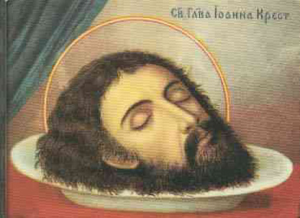 Обсуждать историческую достоверность и семейный узел этой трагедии не имеет смысла в рамках данной работы. Очевидно, что за Усекновением головы Иоанна Крестителя стоят очень глубокие архетипы, оказывающие ключевое влияние на развитие человеческой цивилизации, см. «Таинственное число 11».
Обсуждать историческую достоверность и семейный узел этой трагедии не имеет смысла в рамках данной работы. Очевидно, что за Усекновением головы Иоанна Крестителя стоят очень глубокие архетипы, оказывающие ключевое влияние на развитие человеческой цивилизации, см. «Таинственное число 11».
Вышеуказанный Ирод Антипа ещё известен как строитель Тверии — города на западном берегу Тивериадского озера в Галилее, входящего в число четырёх святых для евреев городов (Иерусалим, Хеврон, Тверия и Цфат). К югу от Тверии находится Ярденит — традиционное место крещения в водах священной реки Иордан. Оно было выбрано в 1981 году правительством Израиля в качестве символического места крещения Иисуса Христа.
Считается, что Тверия / Тивериада была названа в честь императора Тиберия, приемника первого римского императора Августа. Город был построен в 17 году нашей эры. Две тысячи лет – это долгий срок, но не возраст современной человеческой цивилизации.
Созвучие названий Тверь и Тверия – не случайно. Российская Тверь стоит на великой реке Волга, а Тверия – на берегу озера, из которого вытекает Иордан. Древние связи с Тверью имеет Индия и её столица Дели, стоящая на священной для индусов реке Ямуна. В современной истории России Тверь и её правители продолжали играть ключевую роль.
Крайон подчёркивает, что русский язык тесно связан с кодом Многомерного Генома, сращивающего в Единое Целое и разные формы жизни, и разные миры, и разные измерения. Он рассказывает о находившихся на территории современной России древних истоках современной цивилизации – Лемурийский Египет, Гиперборея, Тартоария. В отличие от остальных очагов (Египта, Шумера, Друидии и др.) у России была и остаётся особая миссия по объединению не только различных в развитии народов и культур, но и миров.
Подтверждения следов присутствия предков славян / русских на территории нынешнего Средиземноморского побережья Ближнего Востока можно найти в работах современных исследователей. Позднее там выросли другие культуры и народы, в т.ч. появившиеся после Исхода.
Приложение 1
Джеймс Тиссо, с картины которого начинается данная работа, создал целую коллекцию из рисунков, акварелей и картин маслом на тему Нового и Ветхого и Заветов. Пятьсот из них сегодня находится в коллекции Бруклинского музея – одного из крупнейших художественных музеев США. Он расположен в районе Краун-Хайтс, т.е. Королевские высоты в центре Бруклина и является одной из главных достопримечательностей Нью-Йорка.
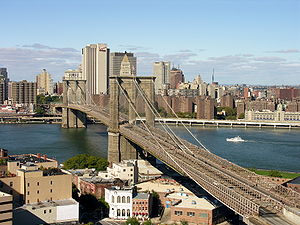 Бруклин является самым большим районом Нью-Йорка. В Бруклине, на Брайтон-Бич находятся те самые камни с загадочными «русскими» ликами, которые связывают Америку с Россией. Известно, что с метафизической точки зрения, мост является символом перехода между реальностями. Бруклин соединен с Манхеттеном знаменитым Бруклинским мостом, который на момент окончания строительства (1883 г.) являлся самым большим подвесным мостом в мире. Его неоготические башни (83 м.) на протяжении еще нескольких лет были самым высокими сооружениями Америки. Именно этот величественный мост стал поводом для вхождения Бруклина в состав Нью-Йорка (т.е. объединения).
Бруклин является самым большим районом Нью-Йорка. В Бруклине, на Брайтон-Бич находятся те самые камни с загадочными «русскими» ликами, которые связывают Америку с Россией. Известно, что с метафизической точки зрения, мост является символом перехода между реальностями. Бруклин соединен с Манхеттеном знаменитым Бруклинским мостом, который на момент окончания строительства (1883 г.) являлся самым большим подвесным мостом в мире. Его неоготические башни (83 м.) на протяжении еще нескольких лет были самым высокими сооружениями Америки. Именно этот величественный мост стал поводом для вхождения Бруклина в состав Нью-Йорка (т.е. объединения).
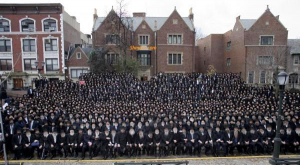 Королевские высоты (Краун-Хайтс) в центральной части Бруклина известны не только вышеуказанным Бруклинским музеем, в котором хранится «библейская» коллекция Джеймса Тиссо. На 7-70 Краун-Хайтс расположен мировой центр движения Хабад-Любавич, зародившегося в России, в местечке Любавичи.
Королевские высоты (Краун-Хайтс) в центральной части Бруклина известны не только вышеуказанным Бруклинским музеем, в котором хранится «библейская» коллекция Джеймса Тиссо. На 7-70 Краун-Хайтс расположен мировой центр движения Хабад-Любавич, зародившегося в России, в местечке Любавичи.
Любавичи находятся в Смоленской области. Смоленск связан с этрусками – основателями Рима, наследниками которого считают себя современные США. Известно, что приход Гитлера к власти в Германии поддерживался некоторыми американскими кругами. Смоленск часто выступал рубежом для различных захватчиков. В 1941 году бои под Смоленском остановили темп продвижения фашистских войск, предусматривавшийся планом «Барбаросса». Смоленск стал единственным советским городом, который посетил Гитлер. Когда Наполеон захватил Смоленск, он снял шляпу в восторге от его духовной твердыни – Успенского собора.
Приложение 2
Первый Иерусалимский храм датируется X –VI вв. до н. э. Он был построен царем Соломоном. С момента Исхода и до строительства этого храма в Иерусалиме временным храмом для евреев служила Скиния (переносная палатка). В ней осуществлялись богослужения и жертвоприношения Единому Богу.
Первый Иерусалимский Храм просуществовал менее 400 лет. В VI веке до нашей эры город был захвачен Вавилонским царем Навуходоносором. Храм постигла печальная участь. Часть жителей была угнана в так называемый Вавилонский плен.
Менее, чем через 50 лет Вавилон был завоёван персидским царём Киром. Евреям разрешается вернуться в Иерусалим и приступить к восстановлению Храма. Расходы по строительству Кир Великий взял на себя. Таким образом, через 70 лет после разрушения Первого Храма, Второй Храм был восстановлен и освящен. В течение этого времени, был перерыв в 15 лет из-за распри между иудеями и самаритянами, которым не позволялось принимать участие в строительстве. Второй Храм простоял менее 600 лет, был более скромен в размерах и не так богато украшен, как Первый Храм. Был утерян и Ковчег Завета посредством которого можно было говорить с Богом. Второй Иерусалимский Храм освещал только один золотой семисвечник.
Ирод Великий решил перестроить и реконструировать Второй Храм. Работы начались около 20 года до нашей эры и были полностью завершены только к 64 году нашей эры. Хотя Храм был почти полностью перестроен, его не стали называть Третьим. Он по-прежнему носил название Второй Иерусалимский Храм. Ирод вдвое увеличил площадь Храмовой горы, для чего возникла необходимость воздвигнуть подпорные стены. До наших дней сохранилась одна из них — западная стена. Она сегодня известна как Стена Плача.
В 70 году Иерусалим был захвачен римской армией во главе с Титом. Город был превращен в руины, а Храм — сожжён и разрушен. После захвата Иерусалима арабами в VII веке, Храмовая гора стала святыней мусульман. Уже почти 2000 лет существуют идеи и движение за восстановление Храма Соломона, который называют Третьим. Оценки этому самые разнообразные.
Приложение 3
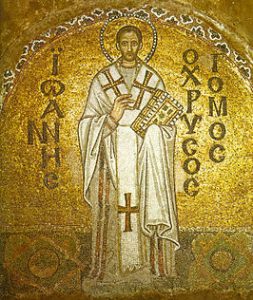 Родился в середине IV века в городе Антиохия – одной из столиц государства Селевкидов, основанного Селевком Никатором — бывшим полководцем и телохранителем Александра Македонского. Великий полководец умер в Вавилоне. В последующую эпоху Селевкидов Вавилон начал постепенно приходить в упадок.
Родился в середине IV века в городе Антиохия – одной из столиц государства Селевкидов, основанного Селевком Никатором — бывшим полководцем и телохранителем Александра Македонского. Великий полководец умер в Вавилоне. В последующую эпоху Селевкидов Вавилон начал постепенно приходить в упадок.
Последователи Христа впервые начали называться христианами именно в Антиохии. Позже она стала называться колыбелью христианского богословия. В Антиохии находился центр одной из четырёх древнейших автокефальных церквей — Антиохийской церкви. По преданию, она основана около 37 года апостолами Петром и Павлом. Павел даже жил в Антиохии. Есть версии, что в Антиохии родился Лука — автор одного из четырёх Евангелий, сподвижник апостола Павла и первый иконописец. Примечателен атрибут Евангелиста Луки – крылатый телец. 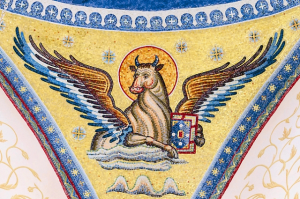 Он пришёл из наследия Вавилона и Шумера, имеет астрономическое значение, указывающее на наступление Эры Водолея.
Он пришёл из наследия Вавилона и Шумера, имеет астрономическое значение, указывающее на наступление Эры Водолея.
В 1342 году кафедра Антиохийской церкви была перенесена в Дамаск, где пребывает до настоящего времени. Сирия – место зарождения столпничества. В работах Николая Вашкевича можно найти много интересной информации о древних связях Сирии и России.
Получив прекрасное образование в Антиохии, Иоанн Златоуст становится архиепископом Константинополя (стоящим на Нильском меридиане) и одним из трех Вселенских христианских святителей. Больной Иоанн Златоуст был выслан из Константинополя в отдалённый Питиунт (Пицунда, Абхазия). По дороге силы покинули святителя и в сентября 407 года, в Каманах (15 км. от Сухуми) ушёл из этой жизни со словами «Слава Богу за всё!». Это произошло у склепа святого Василиска (память 22 мая). Имя Василиск на древнегреческом означает «царь». Василиск – царь змей, с днём которых совпадает День России (12 июня). Василиском называли мудрого змея, наделённого мифическими чертами. Кундалини – змеиная энергия, ведущая к Просветлению. На том же языке Питиунт (Пицунда) означает «Сосновый». По одной из версий, название древнего города восходит к индоарийскому – pitunda – сосновая. Сосновая шишка – сакральный символ. Шишковидная железа, размером лишь с сосновую почку, работает во многих измерениях. Это орган духовного зрения или Третий Глаз, Недреманное Око. Чтобы шишковидная железа, расположенная между полушариями головного мозга, выполняла в полной мере свои многоуровневые духовные функции, необходимо поднять / преобразовать вышеуказанную энергию Кундалини.
После смерти тело Иоанна Златоуста находилось в Каманах. В 483 году его мощи были перенесены в Константинополь, а позднее были вывезены в Рим. В 2004 году, по решению папы Иоанна Павла II, мощи святителя были возвращены Константинопольской церкви и в настоящее время пребывают в кафедральном соборе Святого Георгия в Стамбуле. Образ этого святого стоял у истоков российской государственности, а своими корнями восходит к битве Нибиру и Тиамат.
По решению этого же папы, в Россию была передана находившаяся в его покоях чудотворная икона Богоматери Казанской (из Фатимы), На гербе Казани изображен мудрый дракон. На гербе Москвы Георгий побеждает дракона. Они не противопоставляются друг другу. Это различные глубокие грани одной реальности и общей эволюции.
Каманы являются местом Третьего Обретения Главы Иоанна Крестителя. Он крестил Иисуса Христа в водах Иордана. Был обезглавлен из-за козней иудейской царевны Иродиады и её дочери Саломеи (см. выше раздел V). В этот день в XVI веке крестили маленького Ивана Грозного, а в 2001 году произошла трагедия 11 сентября. Архетип головы – многоуровневый. Пожалуй, самая известная голова великана в сказке А.С. Пушкина «Руслан и Людмила». Как минимум две реликвии претендуют на то, чтобы считаться головой Иоанна Златоуста. Одна хранится на Афоне, другая в Москве, в Храме Христа Спасителя.
Каманы – древнее название. Оно есть не только в Абхазии, но и в России. Деревня Каманы находится в Монастырщинском районе Смоленской области. Река Кама – крупнейший приток Волги (или наоборот…). Уроженцем этого района был Перец Моисеевич Смоленскин, оставивший заметный след в пробуждении еврейского национального сознания и развитии современной литературы на иврите. Иврит является священным языком иудаизма. В алфавите иврита 22 буквы. Смоленскин был один из предвестников сионизма и поборников возвращения евреев в Эрец-Исраэль (Земля Израильская, Земля Обетованная, в которую вел Моисей). Именем Переца Смоленскина названы улицы в Иерусалиме, Ашкелоне, Тель-Авиве и других городах.
В Смоленской области есть два местечка с названием Любавичи. Одно находится в вышеуказанном Монастырщинском районе, другое – и самое известное – в Руднянском районе, ставшее родиной хасидского течения в иудаизме.
Кроме Смоленской области, Монастырщина – название района в Самарской области. В нём находится знаменитый Царёв курган.
В вышеуказанном Руднянском районе Смоленской области родился Герой Советского Союза Михаил Егоров, водрузивший Знамя Победы на крыше немецкого Рейхстага в мае 1945 года.
 Примечателен герб города Рудня и Руднянского района. В его описании указано, что шесть веретён сложенных в звезду и вписанных в кольцо. Есть аналогии со Звездой Давида, но это ещё более древний символ — Цветок Жизни. Древнее название Рудни – Родня. Оно происходит от слова Род.
Примечателен герб города Рудня и Руднянского района. В его описании указано, что шесть веретён сложенных в звезду и вписанных в кольцо. Есть аналогии со Звездой Давида, но это ещё более древний символ — Цветок Жизни. Древнее название Рудни – Родня. Оно происходит от слова Род.
Есть версия, что в названии Рудни нашел отражение тот период в истории Смоленщины, когда на ее территории достигло значительного развития рудное дело. Здесь выплавляли железо из местной болотной руды, а руднями назывались места, где происходила переработка такой руды. В этой точке зрения присутствует определенный символизм. Покровители горняков – это Прокопий Праведный и св. Варвара. Добычей и плавкой металла славен Урал.
Рудня также стала местом первого боевого применения реактивных минометов «Катюша». В честь этого события в городе стоит на пьедестале легендарная «Катюша». На братской могиле 3 тысяч советских граждан, расстрелянных гитлеровцами в 1941 году, установлен памятник «Скорбящая мать», выполненный по проекту уроженца Смоленской области, известного советского скульптора Льва Кербеля.
Август 8, 2017 Властители, Древние цивилизации, Иерусалим ДАЛЕЕ >

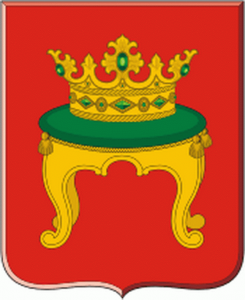
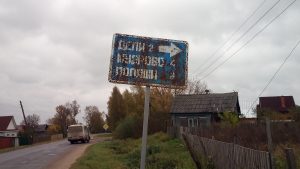 Village Delhi is located 40 km. northwest of Tver. Delhi is a part of the rural settlement Kava. The distance between Kava and Delhi is 2 km.
Village Delhi is located 40 km. northwest of Tver. Delhi is a part of the rural settlement Kava. The distance between Kava and Delhi is 2 km.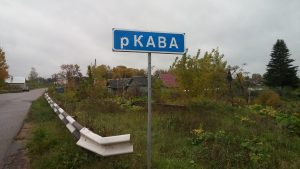
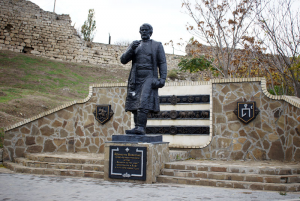 Kava is the ancient name of the modern Crimean city Feodosiya. Translated from the Greek language it means ‘the gift of the gods’. Feodosiya has a statue of the above mentioned Tver citizen
Kava is the ancient name of the modern Crimean city Feodosiya. Translated from the Greek language it means ‘the gift of the gods’. Feodosiya has a statue of the above mentioned Tver citizen 
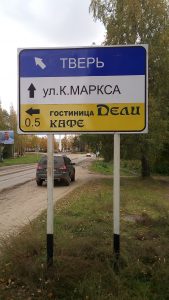 In XVI – XIX centuries Vesyogonsk was an important international trade center. It was known as Vesi Yogan. In Sanskrit, yogin is a person who practices yoga.
In XVI – XIX centuries Vesyogonsk was an important international trade center. It was known as Vesi Yogan. In Sanskrit, yogin is a person who practices yoga.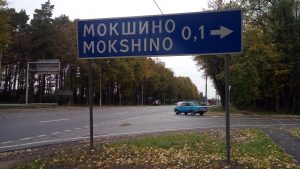 Moksha is often understood as spiritual liberation. Tver region has a number of villages that have the Sanskrit root ‘Moksha‘, including Mokshino. Moksha (Sanskrit: moksa) is a term in Hinduism and Hindu philosophy. It is present in other ancient religions born in India. It refers to freedom from the cycle of death and rebirth (saṃsara) as well as freedom from ignorance. See Russian rivers
Moksha is often understood as spiritual liberation. Tver region has a number of villages that have the Sanskrit root ‘Moksha‘, including Mokshino. Moksha (Sanskrit: moksa) is a term in Hinduism and Hindu philosophy. It is present in other ancient religions born in India. It refers to freedom from the cycle of death and rebirth (saṃsara) as well as freedom from ignorance. See Russian rivers 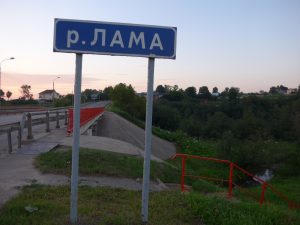 In Tibetan Buddhism, Lama is a title for a teacher of the Dharma. It is similar to the Sanskrit term guru. Lama River (~140 km.) starts in the Moscow region and flows into the Shosha River in the neighboring Tver region near its border with the Moscow region. The Lama’s source is ~90 km. from the center of Moscow.
In Tibetan Buddhism, Lama is a title for a teacher of the Dharma. It is similar to the Sanskrit term guru. Lama River (~140 km.) starts in the Moscow region and flows into the Shosha River in the neighboring Tver region near its border with the Moscow region. The Lama’s source is ~90 km. from the center of Moscow.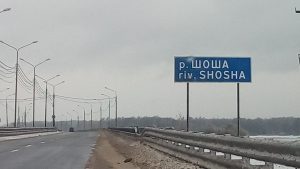 As it is said above, the Lama River is a tributary of the Shosha River. In Hinduism, Shesha (Sanskrit Sesa) is the nagaraja or king of all nagas and one of the primal beings of Creation. Spiritual nagas are known as true masters and teachers of human evolution. Lord Vishnu reclines on the celestial snake, the Shesha-naga.
As it is said above, the Lama River is a tributary of the Shosha River. In Hinduism, Shesha (Sanskrit Sesa) is the nagaraja or king of all nagas and one of the primal beings of Creation. Spiritual nagas are known as true masters and teachers of human evolution. Lord Vishnu reclines on the celestial snake, the Shesha-naga.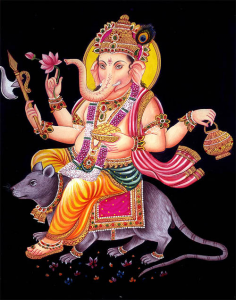 Beside Tver region, there are villages named Vahonino in other parts of Russia. For instance, village Vahonino in the Kotlas district of Arkhangelsk region. Moreover, in the Urdu (rooted in the Indo-Aryan language family, like Hindi), kolta means ‘citadel’. Kotla was the new capital of the Delhi Sultanatein under Sultan Feroz Shah Tughlaq in 14th century. Today it is a part of New Delhi. See above Russian Delhi and Delki. Also, Kotla is a village located in the Champawat district of Uttarakhand state (near the border with Nepal). The native languages of Kotla are Hindi and Sanskrit used by the majority of the village people.
Beside Tver region, there are villages named Vahonino in other parts of Russia. For instance, village Vahonino in the Kotlas district of Arkhangelsk region. Moreover, in the Urdu (rooted in the Indo-Aryan language family, like Hindi), kolta means ‘citadel’. Kotla was the new capital of the Delhi Sultanatein under Sultan Feroz Shah Tughlaq in 14th century. Today it is a part of New Delhi. See above Russian Delhi and Delki. Also, Kotla is a village located in the Champawat district of Uttarakhand state (near the border with Nepal). The native languages of Kotla are Hindi and Sanskrit used by the majority of the village people.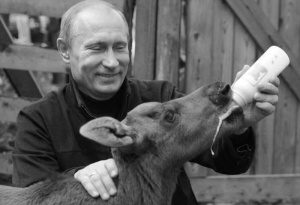
 Urali is also the name of a small railway station in Pune district, Indian state Maharashtra. In Peru, Puno is a port city at an altitude of over 3800 meters on the shores of Lake Titicaca in the Andes, the largest lake in South America. In 2000 (in the beginning of the
Urali is also the name of a small railway station in Pune district, Indian state Maharashtra. In Peru, Puno is a port city at an altitude of over 3800 meters on the shores of Lake Titicaca in the Andes, the largest lake in South America. In 2000 (in the beginning of the 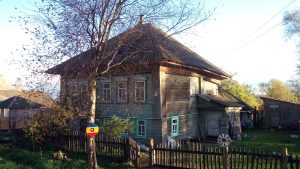 Navi is a village in the Tver region, located on the middle between the above mentioned town Vesyogonsk (having Delhi hotel and Delki street, see Section II) and the town Kashin (see below Section VII).
Navi is a village in the Tver region, located on the middle between the above mentioned town Vesyogonsk (having Delhi hotel and Delki street, see Section II) and the town Kashin (see below Section VII).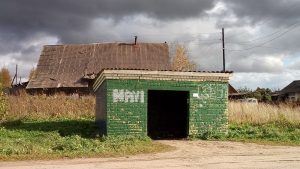

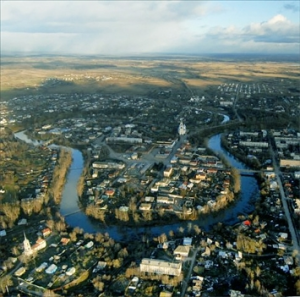 Kashin is one of the oldest towns of the Tver region. Also, Kashin is a village in Hamadan Province of Iran. Interestingly, in the same Hamadan Province there is town Mohajeran, whereas
Kashin is one of the oldest towns of the Tver region. Also, Kashin is a village in Hamadan Province of Iran. Interestingly, in the same Hamadan Province there is town Mohajeran, whereas 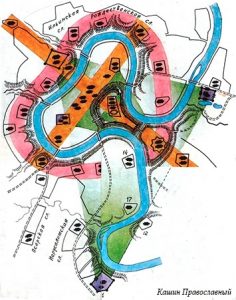 The architects, clergy, merchants of Russian town Kashin have used the Bible description of the Heavenly Jerusalem to implement it in their town. For instance, 17 temples placed on the longitudinal axis crossing the town and 16 temples on the transverse axis. Thus, their total number was 33 or the so-called age of Christ. The town’s main Resurrection Cathedral was surrounded by 24 temples to remind the Revelation of John the Divine where the Heavenly Throne is surrounded by 24 elders. In the 16th century there were 13 monasteries in Kashin, of which the three largest were on the three busiest roads. They were in the corners of a huge triangle, the tops of which were Trinity temples in each of these three monasteries. There was a symbolic union of three Trinity temples in a triangle that is a symbol of the Holy Trinity. In the external monastery triangle covering the entire town there was the internal monastery triangle, inside which was only a fortress, also triangular in shape. This is an ancient sign in the form of oppositely directed triangles, meaning the interaction of Spirit and Matter, evolutionary flows, etc.
The architects, clergy, merchants of Russian town Kashin have used the Bible description of the Heavenly Jerusalem to implement it in their town. For instance, 17 temples placed on the longitudinal axis crossing the town and 16 temples on the transverse axis. Thus, their total number was 33 or the so-called age of Christ. The town’s main Resurrection Cathedral was surrounded by 24 temples to remind the Revelation of John the Divine where the Heavenly Throne is surrounded by 24 elders. In the 16th century there were 13 monasteries in Kashin, of which the three largest were on the three busiest roads. They were in the corners of a huge triangle, the tops of which were Trinity temples in each of these three monasteries. There was a symbolic union of three Trinity temples in a triangle that is a symbol of the Holy Trinity. In the external monastery triangle covering the entire town there was the internal monastery triangle, inside which was only a fortress, also triangular in shape. This is an ancient sign in the form of oppositely directed triangles, meaning the interaction of Spirit and Matter, evolutionary flows, etc. A temple dedicated to the Entry of Jesus into Jerusalem stands at the entrance to Kashin from Moscow (i.e. Russia’s capital). It affirms the symbolic perception of Kashin.
A temple dedicated to the Entry of Jesus into Jerusalem stands at the entrance to Kashin from Moscow (i.e. Russia’s capital). It affirms the symbolic perception of Kashin.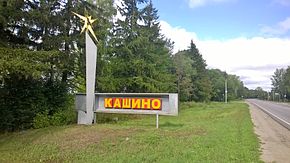 Kashino is the name of dozens settlements in the central and northern parts of Russia. The most famous among them is Kashino in Volokolamsk districts of the Moscow region. This Kashino is ~1 km. from the Lama River (see Section IV). In 1920 the first Russian rural power station was put into operation. It was built by the local peasants but the opening attended
Kashino is the name of dozens settlements in the central and northern parts of Russia. The most famous among them is Kashino in Volokolamsk districts of the Moscow region. This Kashino is ~1 km. from the Lama River (see Section IV). In 1920 the first Russian rural power station was put into operation. It was built by the local peasants but the opening attended 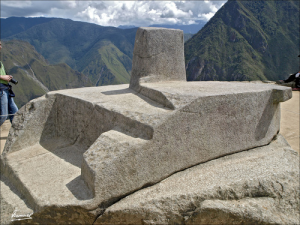
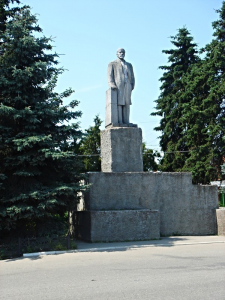 One of the most outstanding statues of this Communist movement’s leader has been erected in the above mentioned town Kashin. The base resembles the world famous Intihuatana in Machu Picchu (Peru). Literally, it means ‘the place when the Sun gets tied’. In Sanskrit, the Sun is Surya. See Russian river Sura. Intihuatana is located at the top of the sacred mountain. This religious construction is a wonder of the ancient technology of a highly developed civilization.
One of the most outstanding statues of this Communist movement’s leader has been erected in the above mentioned town Kashin. The base resembles the world famous Intihuatana in Machu Picchu (Peru). Literally, it means ‘the place when the Sun gets tied’. In Sanskrit, the Sun is Surya. See Russian river Sura. Intihuatana is located at the top of the sacred mountain. This religious construction is a wonder of the ancient technology of a highly developed civilization.
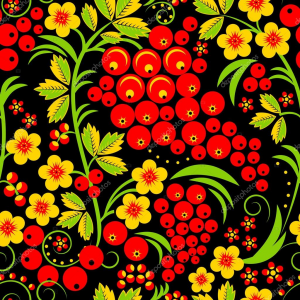 Mikhail Kalinin was born on 19 November 1875. On the same day but in 1917 was born Indira Gandhi, the 3rd Prime Minister of India and the daughter of India’s first Prime Minister, Jawaharlal Nehru. See Lake Neru in the Yaroslavl region of Russia. Moreover, she was born 12 days after the Socialist Revolution in Russia (7 November 1917).
Mikhail Kalinin was born on 19 November 1875. On the same day but in 1917 was born Indira Gandhi, the 3rd Prime Minister of India and the daughter of India’s first Prime Minister, Jawaharlal Nehru. See Lake Neru in the Yaroslavl region of Russia. Moreover, she was born 12 days after the Socialist Revolution in Russia (7 November 1917).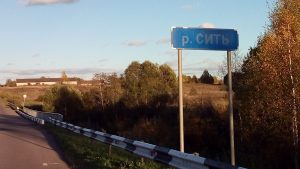
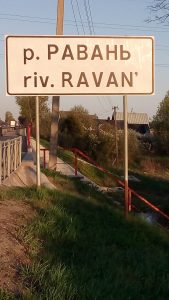 In the Tver region there is river named Sit. In the neighboring Novgorod region there is river Ravan. In the Hindu texts Ravana is considered to be the most revered devotee of Siva. See Russian river Siva. King Ravana was an Asura. See
In the Tver region there is river named Sit. In the neighboring Novgorod region there is river Ravan. In the Hindu texts Ravana is considered to be the most revered devotee of Siva. See Russian river Siva. King Ravana was an Asura. See 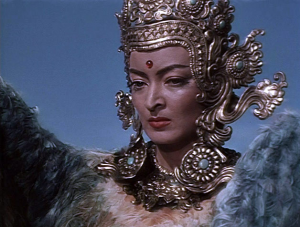
 Interestingly, on the same meridian with Arkaim is Allaki, the archaeological monument in the Middle Urals. Allaki is a bizarre shape complex of 14 granite rocks (stone tents) standing on a small hill. Moreover, Allaki is on the same parallel with Moscow. In Hinduism, Alaka is the splendid home of Kubera, the lord of wealth and half-brother of Ravana.
Interestingly, on the same meridian with Arkaim is Allaki, the archaeological monument in the Middle Urals. Allaki is a bizarre shape complex of 14 granite rocks (stone tents) standing on a small hill. Moreover, Allaki is on the same parallel with Moscow. In Hinduism, Alaka is the splendid home of Kubera, the lord of wealth and half-brother of Ravana.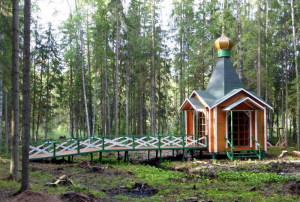 The origin of Western Dvina River (1020 km.) is in the Tver region, on the Valday Hills that cover significant part of the Tver region and are the source of largest European rivers. See below Section X. In Sanskrit, ‘dvaina‘ means ‘divine‘. In the Middle Iranian languages, ‘dvin’ is ‘
The origin of Western Dvina River (1020 km.) is in the Tver region, on the Valday Hills that cover significant part of the Tver region and are the source of largest European rivers. See below Section X. In Sanskrit, ‘dvaina‘ means ‘divine‘. In the Middle Iranian languages, ‘dvin’ is ‘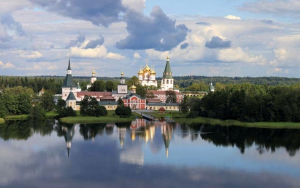 The Valdai is the name of a lake and an upland region in the north-west of central Russia, about midway between Saint Petersburg and Moscow. Broadly speaking, Valdai is a part of the bigger geological structure that extends to the Urals whose highest peak is linked with Vedic sage
The Valdai is the name of a lake and an upland region in the north-west of central Russia, about midway between Saint Petersburg and Moscow. Broadly speaking, Valdai is a part of the bigger geological structure that extends to the Urals whose highest peak is linked with Vedic sage  The world famous Triveni Sangam in Prayag (Allahabad) is a confluence of three rivers (the Ganga, Yamuna, and the mythological Saraswati River). A bath here is said to flush away all of one’s sins and free one from the cycle of rebirth. It is an idea of Moksha (Sanskrit: Moksa). See the river
The world famous Triveni Sangam in Prayag (Allahabad) is a confluence of three rivers (the Ganga, Yamuna, and the mythological Saraswati River). A bath here is said to flush away all of one’s sins and free one from the cycle of rebirth. It is an idea of Moksha (Sanskrit: Moksa). See the river 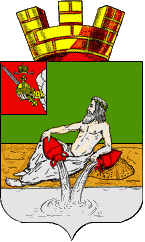 Aquarius is the symbol of Russian town Veliky Ustyug that is located on the confluence of the Sukhona and the Yug rivers. Downstream from this confluence the rivers form a single waterway known as the Northern Dvina. The names of these rivers have Sanskrit root.
Aquarius is the symbol of Russian town Veliky Ustyug that is located on the confluence of the Sukhona and the Yug rivers. Downstream from this confluence the rivers form a single waterway known as the Northern Dvina. The names of these rivers have Sanskrit root.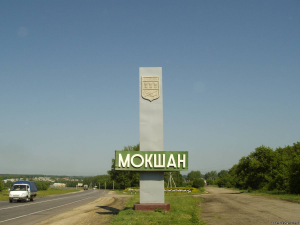 Moksha is the name of a river in Central Russia. Its source is around 530 km. south-east of Moscow, near town Mokshan. The Moksha River (~ 650 km.) is a tributary of the Oka River. See
Moksha is the name of a river in Central Russia. Its source is around 530 km. south-east of Moscow, near town Mokshan. The Moksha River (~ 650 km.) is a tributary of the Oka River. See 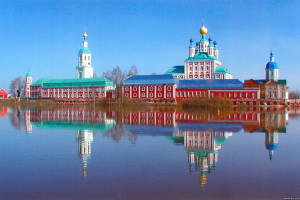 Sanaksar monastery is located on the Moksha River. Its name is close to Sanskrit word Saṃsara meaning world and circuitous change, etc. Samsara is a religious concept of reincarnation in Hinduism and other Indian religions, such as Buddhism and Jainism. The liberation from Samsara is called Moksha as the river where Sanaksar Monastery is located (or vice verse). Presumably, not by chance look similar the Samsara wheel, the Dharma wheel and ship steering wheel…
Sanaksar monastery is located on the Moksha River. Its name is close to Sanskrit word Saṃsara meaning world and circuitous change, etc. Samsara is a religious concept of reincarnation in Hinduism and other Indian religions, such as Buddhism and Jainism. The liberation from Samsara is called Moksha as the river where Sanaksar Monastery is located (or vice verse). Presumably, not by chance look similar the Samsara wheel, the Dharma wheel and ship steering wheel…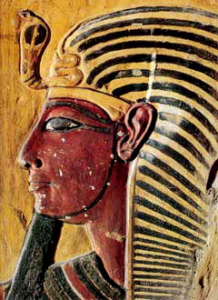 The Moksha itself has many tributaries whose names could be translated from Sanskrit. For instance, the river Sukhoi Urey. In Sanskrit, sukha means delight, joy, etc. Well known in Buddhism is Sukhavati or the Western Paradise. Urey is the ancient Egyptian symbol of royalty, power of life and death, the ability to edit and destroy the enemies of the god Ra. Ra is the ancient name of the above mentioned river
The Moksha itself has many tributaries whose names could be translated from Sanskrit. For instance, the river Sukhoi Urey. In Sanskrit, sukha means delight, joy, etc. Well known in Buddhism is Sukhavati or the Western Paradise. Urey is the ancient Egyptian symbol of royalty, power of life and death, the ability to edit and destroy the enemies of the god Ra. Ra is the ancient name of the above mentioned river 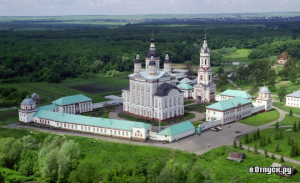 The Scanov monastery is located a few kilometers from the above mentioned Moksha River. It was founded in the 17th century. After 1917 the monastery was closed by the Soviet power like the other ones countrywide. In 1985 the buildings of Scanov monastery were transferred back to the Russian Orthodox Church. The first renewed service was held in 1990 on April 12 that is Cosmonautics Day in Russia. In 1961, April 12th, the Soviet cosmonaut Yuri Gagarin became the first human to travel into Cosmos. He performed the first manned orbital flight around the Earth and landed near Samara. See above for Samsara wheel, etc.
The Scanov monastery is located a few kilometers from the above mentioned Moksha River. It was founded in the 17th century. After 1917 the monastery was closed by the Soviet power like the other ones countrywide. In 1985 the buildings of Scanov monastery were transferred back to the Russian Orthodox Church. The first renewed service was held in 1990 on April 12 that is Cosmonautics Day in Russia. In 1961, April 12th, the Soviet cosmonaut Yuri Gagarin became the first human to travel into Cosmos. He performed the first manned orbital flight around the Earth and landed near Samara. See above for Samsara wheel, etc.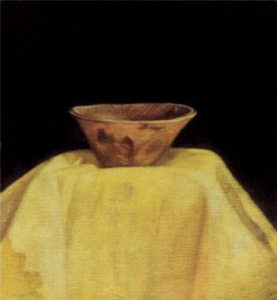 Buddha Gautama was born in India. His universal teaching still influences the country. The central motif of the Indian flag is the Buddhist spinning wheel or Ashoka Chakra. This Dharma chakra is placed on the Sarnath Capital of the Buddhist emperor
Buddha Gautama was born in India. His universal teaching still influences the country. The central motif of the Indian flag is the Buddhist spinning wheel or Ashoka Chakra. This Dharma chakra is placed on the Sarnath Capital of the Buddhist emperor 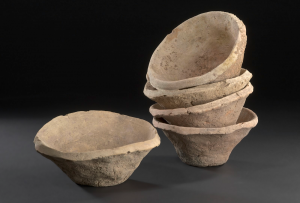 Uruk in Southern Iraq is credited as the first known city of the present civilization. So, Uruk is the parent of all modern cities. The estimated age of Uruk is around 6000 years. The ceramics of Uruk and its colonies have striking similarity the above mentioned Buddha’s Bowl.
Uruk in Southern Iraq is credited as the first known city of the present civilization. So, Uruk is the parent of all modern cities. The estimated age of Uruk is around 6000 years. The ceramics of Uruk and its colonies have striking similarity the above mentioned Buddha’s Bowl.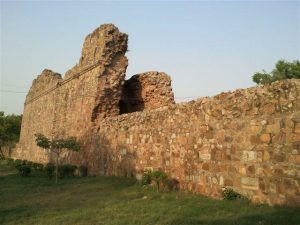
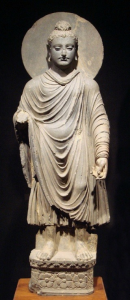 The following Vedic Civilization (approximately 1500 – 500 BC) characterized by Indo-Aryan culture, laid the foundations of Hinduism. Buddhism or rather unique Buddhist civilization took root here some 2500 years ago. Moreover, its main international centers were in the Pakistan region, i.e. Gandhara, Taxila,
The following Vedic Civilization (approximately 1500 – 500 BC) characterized by Indo-Aryan culture, laid the foundations of Hinduism. Buddhism or rather unique Buddhist civilization took root here some 2500 years ago. Moreover, its main international centers were in the Pakistan region, i.e. Gandhara, Taxila, 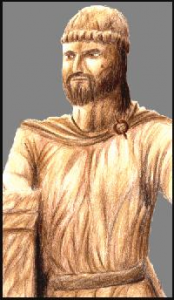 Peshawar was the place where the army of Alexander the Great stopped and refused to go any further, except for home. Peshawar is the oldest city in Pakistan and one of the oldest in South Asia. It was the capital of Kanishka the Great who ruled in the 2nd century AD and was presumably from the
Peshawar was the place where the army of Alexander the Great stopped and refused to go any further, except for home. Peshawar is the oldest city in Pakistan and one of the oldest in South Asia. It was the capital of Kanishka the Great who ruled in the 2nd century AD and was presumably from the 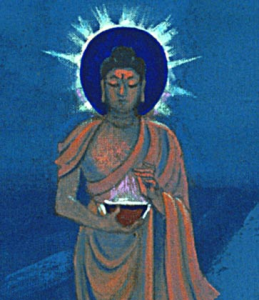
 The statues and the surrounding cultural landscape are listed by UNESCO as a World Heritage Site. Madam Blavatsky (1831 — 1891) mentioned them in her Secret Doctrine. These statues represent five root races of mankind and their decrease in physical size. The first and largest statue was about 53 meters. The last of them is only slightly more than the average high man of our present race. The first two root races had ethereal bodies. The latter got physical ones. The third (~18 m.) and the forth (~8 m.) statues consequently represent the legendary Lemurians and Atlanteans. The statues were made in the image Buddha in our era by the monks.
The statues and the surrounding cultural landscape are listed by UNESCO as a World Heritage Site. Madam Blavatsky (1831 — 1891) mentioned them in her Secret Doctrine. These statues represent five root races of mankind and their decrease in physical size. The first and largest statue was about 53 meters. The last of them is only slightly more than the average high man of our present race. The first two root races had ethereal bodies. The latter got physical ones. The third (~18 m.) and the forth (~8 m.) statues consequently represent the legendary Lemurians and Atlanteans. The statues were made in the image Buddha in our era by the monks.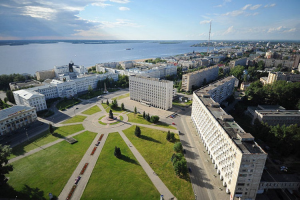
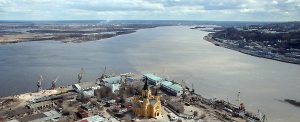 The Oka (right) is a major tributary of the Volga (left). In Sanskrit, oka means ‘conjunction of heavenly bodies’.
The Oka (right) is a major tributary of the Volga (left). In Sanskrit, oka means ‘conjunction of heavenly bodies’.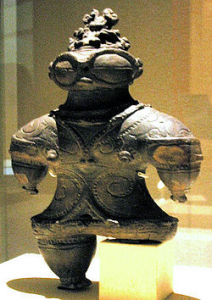 Kuril Islands are a part of Russia’s Sakhalin region. They separate the Sea of Okhotsk from the Pacific Ocean. It is believe that name Kuril originates from the islands’ original inhabitants word ‘kur’, meaning ‘man’.
Kuril Islands are a part of Russia’s Sakhalin region. They separate the Sea of Okhotsk from the Pacific Ocean. It is believe that name Kuril originates from the islands’ original inhabitants word ‘kur’, meaning ‘man’.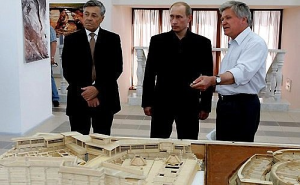
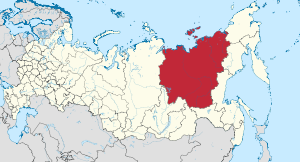 The Saha is the largest subnational governing body by area in the world (over 3 mln. km2). The Saha’s population is ~1 million. In comparison, India is over 3,2 mln. km2 for over 1,3 billion people. Approximately 99% of all Russian diamonds are mined here in Saha (Yakutia). Currently, Russia is the largest producer of the diamonds in the world (~ 1/3 of the market). Indian KGK Diamonds works in Saha.
The Saha is the largest subnational governing body by area in the world (over 3 mln. km2). The Saha’s population is ~1 million. In comparison, India is over 3,2 mln. km2 for over 1,3 billion people. Approximately 99% of all Russian diamonds are mined here in Saha (Yakutia). Currently, Russia is the largest producer of the diamonds in the world (~ 1/3 of the market). Indian KGK Diamonds works in Saha.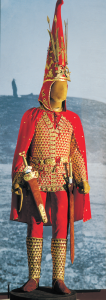 The Saka was the term used in Persian and Sanskrit sources for the
The Saka was the term used in Persian and Sanskrit sources for the 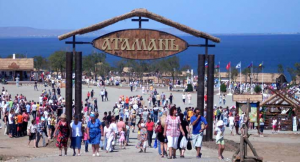 Village Atman is few kilometers west from Simferopol, the administrative centre of the Crimea. The name comes from the Greek Sympheropolis meaning ‘city of common good’. In the past Simferopol was known by other Greek name — The Scythian Neapolis. It was the ancient capital of the Crimean Scythians who lived on the territory from the 3rd century BC to the 4th century AD. They were the relatives of the co called Indo-Scythians or just Scythians (Saka), who migrated from Central Asia to India from the middle of the 2nd century BC to the 4th century AD.
Village Atman is few kilometers west from Simferopol, the administrative centre of the Crimea. The name comes from the Greek Sympheropolis meaning ‘city of common good’. In the past Simferopol was known by other Greek name — The Scythian Neapolis. It was the ancient capital of the Crimean Scythians who lived on the territory from the 3rd century BC to the 4th century AD. They were the relatives of the co called Indo-Scythians or just Scythians (Saka), who migrated from Central Asia to India from the middle of the 2nd century BC to the 4th century AD.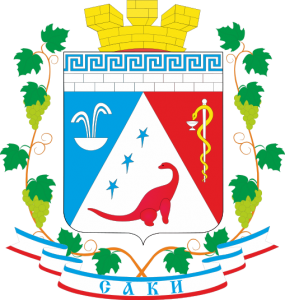 The ancestors of the Indo-Scythians are thought to be Saka (Scythian) tribes.
The ancestors of the Indo-Scythians are thought to be Saka (Scythian) tribes.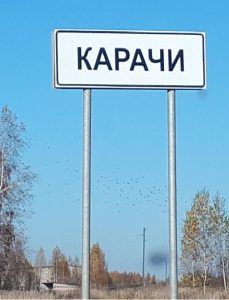 River to start a community. Indrus is the name of river in Vladimir region of Russia. In Russian, Kolachi means wheat breads in the form of a lock and with a handle. Moreover, settlement Karachi exists in
River to start a community. Indrus is the name of river in Vladimir region of Russia. In Russian, Kolachi means wheat breads in the form of a lock and with a handle. Moreover, settlement Karachi exists in 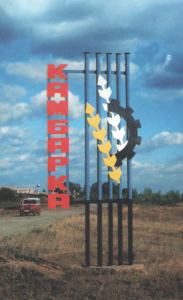
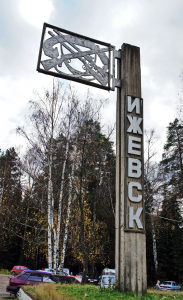
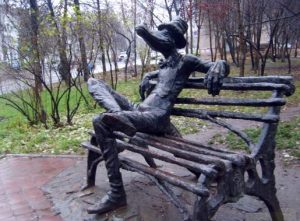 Izhevsk has a charming monument of crocodile, although crocodiles are not local species. There are different versions of the reasons. Some state that the origin of the monuments is the nickname for the Izhevsk factory gunsmiths — ‘Izhevsk crocodiles’. They were given green caftans for special achievements. Like Karachi, Izhevsk was found in 18th century. A legend about foundation of Karachi says that it was named in honour of a fisher woman, whose son is said to have slayed a man-eating crocodile.
Izhevsk has a charming monument of crocodile, although crocodiles are not local species. There are different versions of the reasons. Some state that the origin of the monuments is the nickname for the Izhevsk factory gunsmiths — ‘Izhevsk crocodiles’. They were given green caftans for special achievements. Like Karachi, Izhevsk was found in 18th century. A legend about foundation of Karachi says that it was named in honour of a fisher woman, whose son is said to have slayed a man-eating crocodile.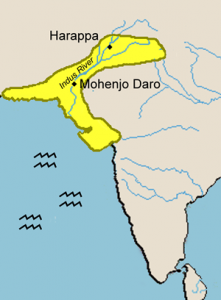
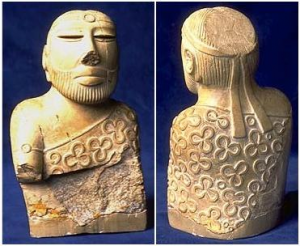 Interesting enough is the soapstone figure of a man found in Mohenjo-daro. The three circle motif on his cloak resembles the seal of Shambala.
Interesting enough is the soapstone figure of a man found in Mohenjo-daro. The three circle motif on his cloak resembles the seal of Shambala.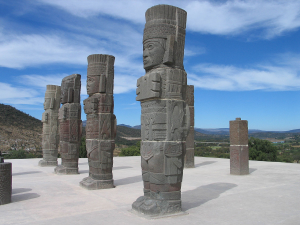 Tula is a world known Mesoamerican archeological site northwest of Mexico City. It was the capital of the Toltec Empire and important regional center. A legendary ruler of Tula was Quetzalcoatl. Its pyramid topped by four rather ancient astronauts is the main attraction of Tula. It fell in the middle of 12th century, but had significant influence in the following Aztec empire. When the Spanish arrived the feathered serpent god Quetzalcoatl linked to Tula was worshiped throughout Central America.
Tula is a world known Mesoamerican archeological site northwest of Mexico City. It was the capital of the Toltec Empire and important regional center. A legendary ruler of Tula was Quetzalcoatl. Its pyramid topped by four rather ancient astronauts is the main attraction of Tula. It fell in the middle of 12th century, but had significant influence in the following Aztec empire. When the Spanish arrived the feathered serpent god Quetzalcoatl linked to Tula was worshiped throughout Central America.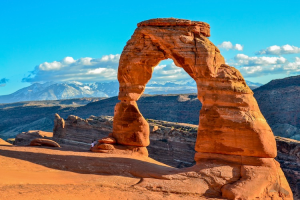 Among the main attractions of Utah is the world unique Arches National Park. Arka is synonyms of Sun god Surya and is a part of the name Dwarka whose literal meaning is ‘gateway to heaven’. See Section I.
Among the main attractions of Utah is the world unique Arches National Park. Arka is synonyms of Sun god Surya and is a part of the name Dwarka whose literal meaning is ‘gateway to heaven’. See Section I.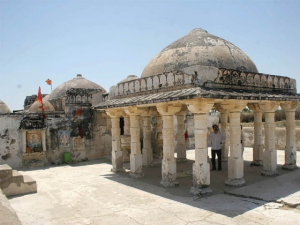 The temple was built in 14th century by a wealthy merchant who had been instructed in his dream by an angel. The Gori temple was dedicated to Lord Parshwanath, the 23rd Jain prophet who preached around the 8th century BC. At least a dozen major Indian Jain temples trace their heritage to Pakistan’s Gori temple. Jainism is one of the oldest religions and Parshwanath is among those who attract the most devotional worship of the Jains. He is credited with starting the tradition of ‘four fold restraints’ for monks – don’t kill, don’t steal, don’t lie and don’t own property.
The temple was built in 14th century by a wealthy merchant who had been instructed in his dream by an angel. The Gori temple was dedicated to Lord Parshwanath, the 23rd Jain prophet who preached around the 8th century BC. At least a dozen major Indian Jain temples trace their heritage to Pakistan’s Gori temple. Jainism is one of the oldest religions and Parshwanath is among those who attract the most devotional worship of the Jains. He is credited with starting the tradition of ‘four fold restraints’ for monks – don’t kill, don’t steal, don’t lie and don’t own property.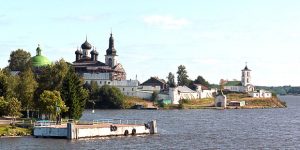 Goritsy female monastery is located near the Sanskrit named
Goritsy female monastery is located near the Sanskrit named 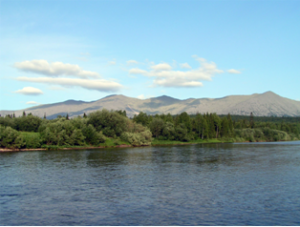 As it is said above, Prahlada was devoted towards Hindu god Vishnu. In the Urals there is Vishera River. Vishera River is a major tribute of Kama River and one of the most beautiful rivers of the Urals.
As it is said above, Prahlada was devoted towards Hindu god Vishnu. In the Urals there is Vishera River. Vishera River is a major tribute of Kama River and one of the most beautiful rivers of the Urals. 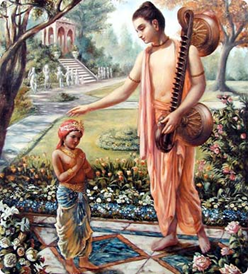 The distance between the source of Vishera River and the mount Narodnaya / river Narada is about 400 km. See
The distance between the source of Vishera River and the mount Narodnaya / river Narada is about 400 km. See 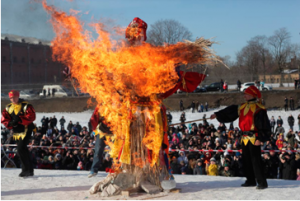 Holi is the Hindu spring festival that has a sticking similarity with Russian festival Maslenitsa, also known as Butter Week. It is one of the oldest surviving Slavic carnivals, celebrating of the imminent end of the winter. The last day is called Sunday of Forgiveness. Relatives and friends ask each other for forgiveness. As the culmination of the celebration people gather to burn Lady Maslenitsa in a bonfire.
Holi is the Hindu spring festival that has a sticking similarity with Russian festival Maslenitsa, also known as Butter Week. It is one of the oldest surviving Slavic carnivals, celebrating of the imminent end of the winter. The last day is called Sunday of Forgiveness. Relatives and friends ask each other for forgiveness. As the culmination of the celebration people gather to burn Lady Maslenitsa in a bonfire.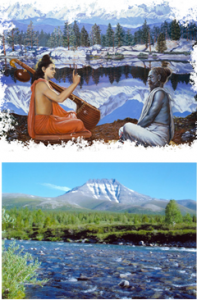 Narada is the Vedic sage who carries enlightening wisdom and travels to distant worlds and realms of the Universe. Narada is considered the greatest of sages. According to the Indian epic, Narada lived in the north.
Narada is the Vedic sage who carries enlightening wisdom and travels to distant worlds and realms of the Universe. Narada is considered the greatest of sages. According to the Indian epic, Narada lived in the north.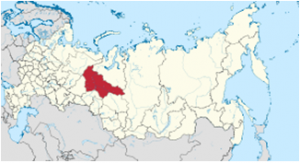 Mount Narodnaya (Narada) is located in the region called Yugra. The region has great economic importance. The majority (>51%) of the oil produced in Russia comes from Yugra. See about the Russian rivers Ugra and
Mount Narodnaya (Narada) is located in the region called Yugra. The region has great economic importance. The majority (>51%) of the oil produced in Russia comes from Yugra. See about the Russian rivers Ugra and 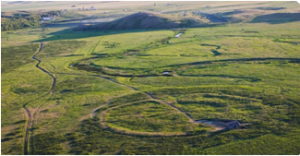
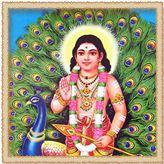
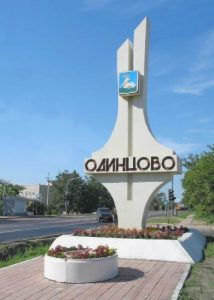 The
The 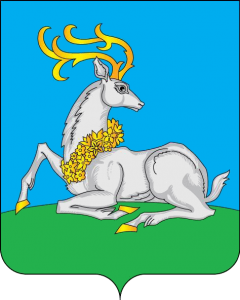 deer, representing cleanliness and purity. The deer lies facing the west, although gazes to the east. It is the destiny of Russia to harmoniously unite the East (The Spirit) and the West (The Matter).
deer, representing cleanliness and purity. The deer lies facing the west, although gazes to the east. It is the destiny of Russia to harmoniously unite the East (The Spirit) and the West (The Matter).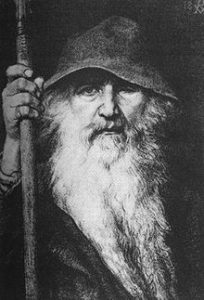 In Germanic mythology, Odin is a widely respected god. He is associated with healing, knowledge, battle, sorcery, poetry, the runic alphabet, etc. In order to gain wisdom, Odin sacrificed one of his eyes at the spring of Mimir which was the source of all knowledge. See Kashmir. This aligns with the ancient Egyptian mythos about the Eye of Horus and the Eye of Ra. The All-Seeing Eye is one of the oldest depictions of the Deity.
In Germanic mythology, Odin is a widely respected god. He is associated with healing, knowledge, battle, sorcery, poetry, the runic alphabet, etc. In order to gain wisdom, Odin sacrificed one of his eyes at the spring of Mimir which was the source of all knowledge. See Kashmir. This aligns with the ancient Egyptian mythos about the Eye of Horus and the Eye of Ra. The All-Seeing Eye is one of the oldest depictions of the Deity.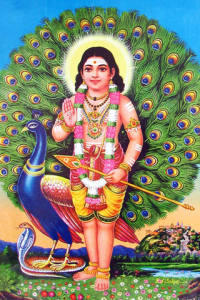 the Pleiadian Head Master, is the one leads towards Brahman, the Highest God. Sanat Kumara is one of the Four Kumaras who are the first mind-born creations and sons of the creator-god Brahma. In the Theosophical publications Sanat Kumara is an Ascended Master of Light.
the Pleiadian Head Master, is the one leads towards Brahman, the Highest God. Sanat Kumara is one of the Four Kumaras who are the first mind-born creations and sons of the creator-god Brahma. In the Theosophical publications Sanat Kumara is an Ascended Master of Light.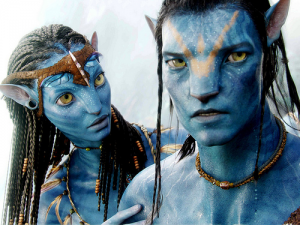 When looked from such angle, Scandinavia = Skanda + Navi.
When looked from such angle, Scandinavia = Skanda + Navi.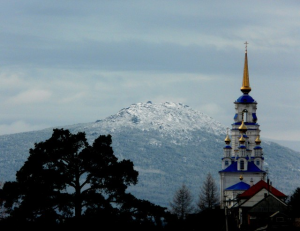 Urals and the South African iron-ore company. Kumba Iron Ore is the fourth largest iron-ore producer in the world and the largest in Africa. Major Russian iron ore and metallurgical companies are based in the Urals having the rich natural deposits.
Urals and the South African iron-ore company. Kumba Iron Ore is the fourth largest iron-ore producer in the world and the largest in Africa. Major Russian iron ore and metallurgical companies are based in the Urals having the rich natural deposits.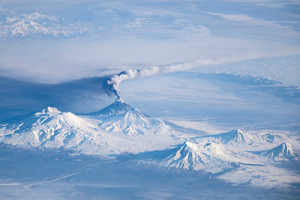
 The first documented settlers (XII century) of Veliky Ustyug were the citizens of
The first documented settlers (XII century) of Veliky Ustyug were the citizens of 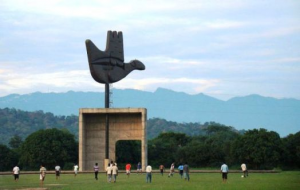 A recurring motif in Le Corbusier’s architecture was The Open Hand. It is a sign of peace and reconciliation. It is open to give and open to receive. The largest of the many Open Hand sculptures that Le Corbusier created is in Chandigarh (26 meter high). Upon the architect’s death in 1965, United States President Lyndon Johnson said, «His influence was universal and his works are invested with a permanent quality possessed by those of very few artists in our history». The Soviet Union added, «Modern architecture has lost its greatest master».
A recurring motif in Le Corbusier’s architecture was The Open Hand. It is a sign of peace and reconciliation. It is open to give and open to receive. The largest of the many Open Hand sculptures that Le Corbusier created is in Chandigarh (26 meter high). Upon the architect’s death in 1965, United States President Lyndon Johnson said, «His influence was universal and his works are invested with a permanent quality possessed by those of very few artists in our history». The Soviet Union added, «Modern architecture has lost its greatest master».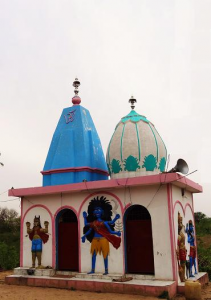 Chandigarh’s name is liked with the goddess Chandi. She is said to be one of the most spectacular of all personifications of Cosmic energy.
Chandigarh’s name is liked with the goddess Chandi. She is said to be one of the most spectacular of all personifications of Cosmic energy.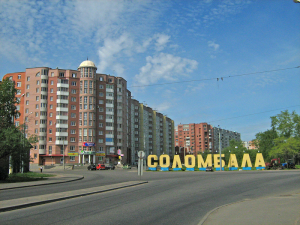

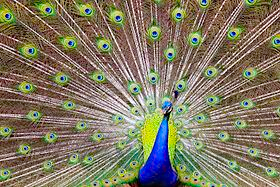 Ashoka was a grandson of Chandragupta Maurya (340 — 298 BC) who was the founder of the Maurya Dynasty. Mayura is peacock in Sanskrit. It is the national bird of India and symbol of Russian city
Ashoka was a grandson of Chandragupta Maurya (340 — 298 BC) who was the founder of the Maurya Dynasty. Mayura is peacock in Sanskrit. It is the national bird of India and symbol of Russian city  It is presumed that the Kalinga War was fought in the area of Dhauli hills located ~8 km. south of Bhubaneswar. A white peace pagoda was built on the top of the hill in the 1970s. At the same a monument of Lenin was erected in Russian historical town Aleksandrov that was the capital of the country in the 16th century under the rule of the above mentioned Ivan the Terrible. Aleksandrov is ~100 km. north-east of Moscow. Today, Aleksandrov is a part of Vladimir region that has ancient ties with India. There are certain resembles between the hand gestures of Lenin in Aleksandrov (right) and Buddha in the Dhauli peace pagoda (left). Equally, the basic ideas of Communism (world community) and Buddhism have much in common. It is known that The Masters of the Ancient Wisdom have named Lenin as a
It is presumed that the Kalinga War was fought in the area of Dhauli hills located ~8 km. south of Bhubaneswar. A white peace pagoda was built on the top of the hill in the 1970s. At the same a monument of Lenin was erected in Russian historical town Aleksandrov that was the capital of the country in the 16th century under the rule of the above mentioned Ivan the Terrible. Aleksandrov is ~100 km. north-east of Moscow. Today, Aleksandrov is a part of Vladimir region that has ancient ties with India. There are certain resembles between the hand gestures of Lenin in Aleksandrov (right) and Buddha in the Dhauli peace pagoda (left). Equally, the basic ideas of Communism (world community) and Buddhism have much in common. It is known that The Masters of the Ancient Wisdom have named Lenin as a 
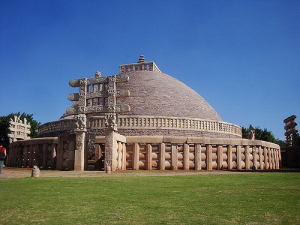 The famous Great Stupa in Sanchi was originally commissioned by Ashoka in the 3rd century BC. Today, it is one of the oldest stone structures in India. Sanchi is significant for Buddhist around the world. The stupa is located ~200 km east of Ujjain.
The famous Great Stupa in Sanchi was originally commissioned by Ashoka in the 3rd century BC. Today, it is one of the oldest stone structures in India. Sanchi is significant for Buddhist around the world. The stupa is located ~200 km east of Ujjain.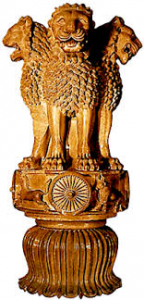 Ashoka pillar capital of Sarnath has become the State Emblem of India. Sarnath is located north-east of Varanasi (ancient
Ashoka pillar capital of Sarnath has become the State Emblem of India. Sarnath is located north-east of Varanasi (ancient 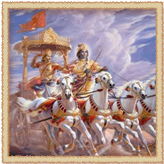

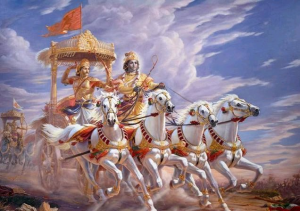 as the ‘field of Dharma’ or field of righteousness. The Bhagavad Gita (Sanskrit: ‘Song of the Lord’) was preached by Krishna before this war started. It is one of the most respected religious and philosophical texts in the Hindu religion.
as the ‘field of Dharma’ or field of righteousness. The Bhagavad Gita (Sanskrit: ‘Song of the Lord’) was preached by Krishna before this war started. It is one of the most respected religious and philosophical texts in the Hindu religion.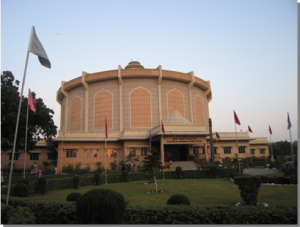
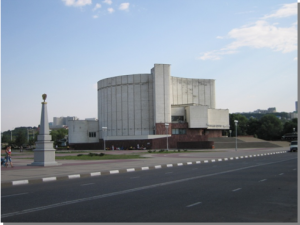 The Battle of the Kuru field (Kurukshetra) began on August 5, 3102 BC. On August 5, 1943, the Soviet troops liberated Russian cities Belgorod and Orel. The first salute in the history of the Soviet Union was dedicated to this significant event. Literally, Belgorod means White City or Heavenly Jerusalem. Orel is the Russian name of eagle that is ‘king of the skies’, messenger of the highest gods, symbol of power and immortality (higher consciousness).
The Battle of the Kuru field (Kurukshetra) began on August 5, 3102 BC. On August 5, 1943, the Soviet troops liberated Russian cities Belgorod and Orel. The first salute in the history of the Soviet Union was dedicated to this significant event. Literally, Belgorod means White City or Heavenly Jerusalem. Orel is the Russian name of eagle that is ‘king of the skies’, messenger of the highest gods, symbol of power and immortality (higher consciousness).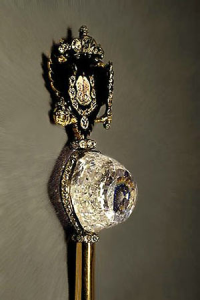 The name Koh-i-noor is derived from the Persian language which means ‘Mountain of Light’. It is said that the Koh-i-noor was mounted on the Peacock Throne of the Mughal Emperors of India. In the middle of 19th century the Koh-i-noor was given to Queen Victoria after the British conquest of the Punjab. Today, the Koh-i-noor is the largest diamond set in the Queen Mother’s Crown that is a part of the Crown Jewels of the United Kingdom. India wants it back as it is part of the glorious national heritage.
The name Koh-i-noor is derived from the Persian language which means ‘Mountain of Light’. It is said that the Koh-i-noor was mounted on the Peacock Throne of the Mughal Emperors of India. In the middle of 19th century the Koh-i-noor was given to Queen Victoria after the British conquest of the Punjab. Today, the Koh-i-noor is the largest diamond set in the Queen Mother’s Crown that is a part of the Crown Jewels of the United Kingdom. India wants it back as it is part of the glorious national heritage.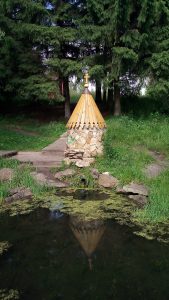 On the northern part of the Kursk Arc (or field), in the Orel region, there is the source of the Russian river Oka. See
On the northern part of the Kursk Arc (or field), in the Orel region, there is the source of the Russian river Oka. See 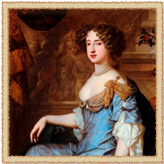
 Ашкелон относится к древнейшим городам на нашей планете. Его возраст – около 5
Ашкелон относится к древнейшим городам на нашей планете. Его возраст – около 5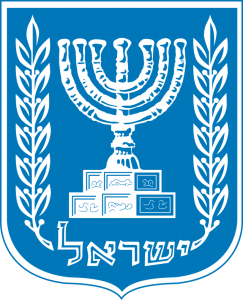
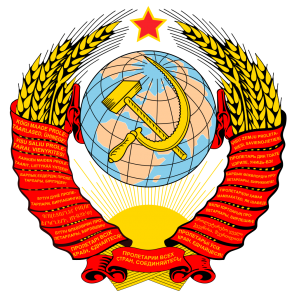 Примечательно, что Рим /
Примечательно, что Рим / 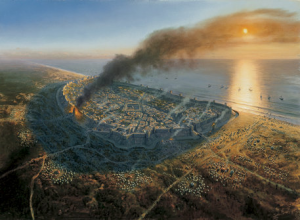 в
в 

 Сердце. Именно Бейбарс стал тем, кто окончательно разрушил древний Ашкелон, остававшийся одной из последних цитаделей крестоносцев на Святой Земле. Город был стерт с лица земли, а его территория на
Сердце. Именно Бейбарс стал тем, кто окончательно разрушил древний Ашкелон, остававшийся одной из последних цитаделей крестоносцев на Святой Земле. Город был стерт с лица земли, а его территория на 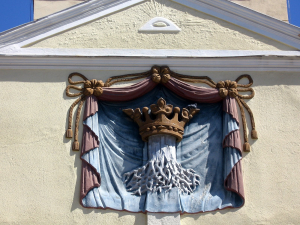 Семерка – это самое распространенное (наряду с тройкой) и одно из самых сакральных чисел во многих религиях и культурах. Оно выражает союз
Семерка – это самое распространенное (наряду с тройкой) и одно из самых сакральных чисел во многих религиях и культурах. Оно выражает союз 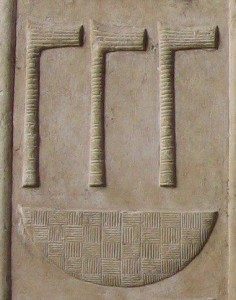 В Древнем Египте это был символ богов, т.е. нетеру (
В Древнем Египте это был символ богов, т.е. нетеру (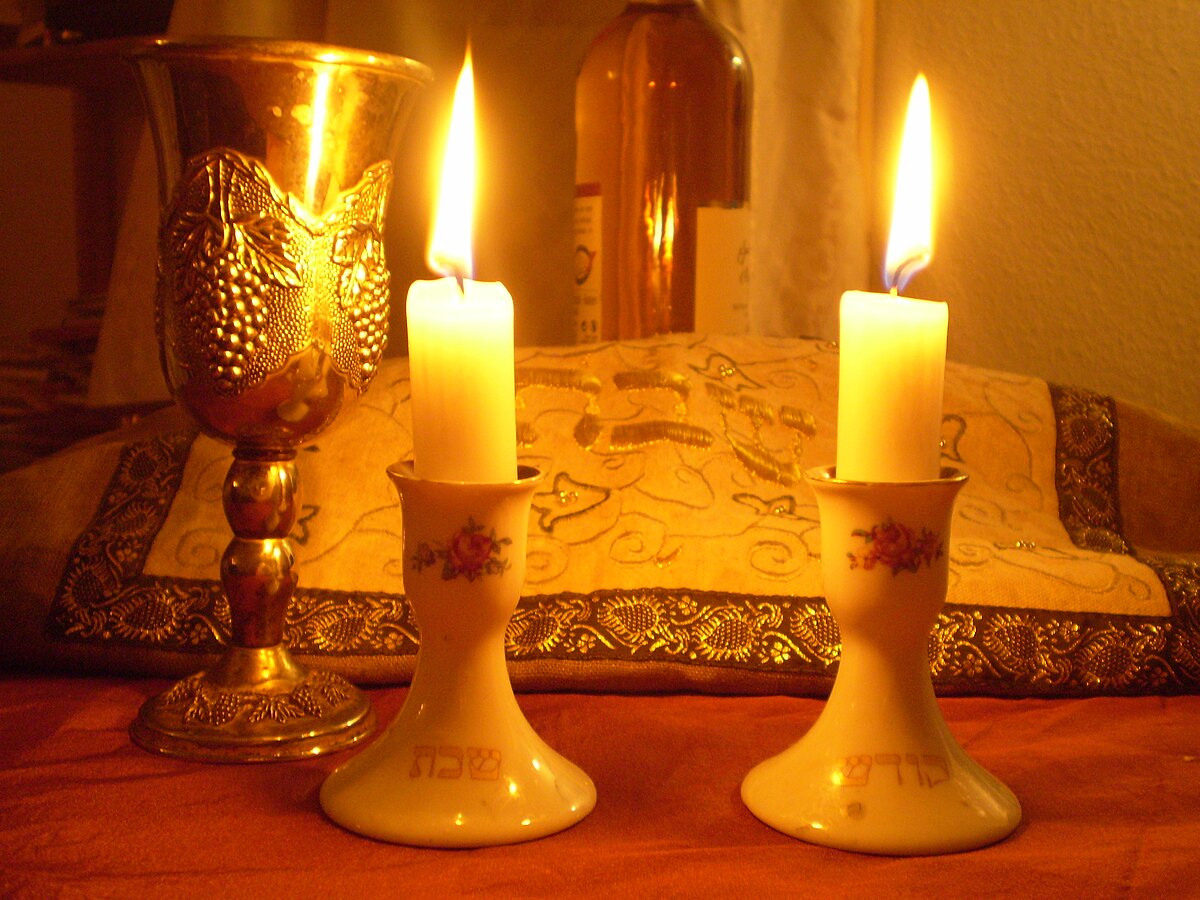
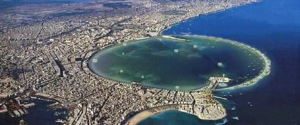 Александр Македонский умер молодым в 323 году до нашей эры в
Александр Македонский умер молодым в 323 году до нашей эры в 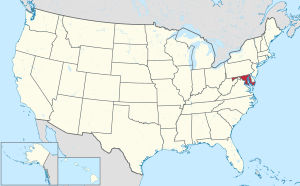 Свое имя Мэриленд получил в 1634 году в честь королевы Генриетты Марии (1609 — 1669), жены Карла I Стюарта, короля Англии, Шотландии и
Свое имя Мэриленд получил в 1634 году в честь королевы Генриетты Марии (1609 — 1669), жены Карла I Стюарта, короля Англии, Шотландии и 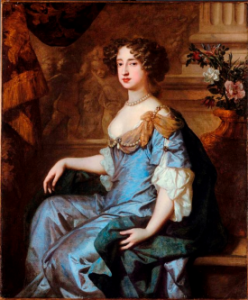 Ирландии. Она – мать двух английских монархов из династии Стюартов (Карла II и Якова II) и бабушка еще троих. По женской линии от нее ведут происхождение пять французских королей. Генриетта Мария была дочерью французского короля Генриха IV и флорентийки
Ирландии. Она – мать двух английских монархов из династии Стюартов (Карла II и Якова II) и бабушка еще троих. По женской линии от нее ведут происхождение пять французских королей. Генриетта Мария была дочерью французского короля Генриха IV и флорентийки 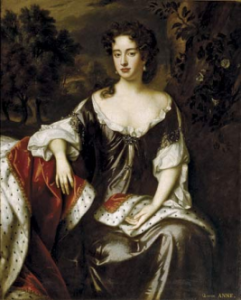 свободу вероисповедания. Сюда потянулись многие католики, преследованные в Англии. В 1694 году столица Мэриленда была перенесена в Провиденс (англ. – «Провидение»), который в 1708 году был переименован в Аннаполис в честь королевы Анны Стюарт, ставшей первым монархом соединенного Королевства Великобритания (т.е. объединившихся Англии и Шотландии). Эта идея отражена на гербе (печати) Аннаполиса – союз английской розы и шотландского чертополоха под единой короной.
свободу вероисповедания. Сюда потянулись многие католики, преследованные в Англии. В 1694 году столица Мэриленда была перенесена в Провиденс (англ. – «Провидение»), который в 1708 году был переименован в Аннаполис в честь королевы Анны Стюарт, ставшей первым монархом соединенного Королевства Великобритания (т.е. объединившихся Англии и Шотландии). Эта идея отражена на гербе (печати) Аннаполиса – союз английской розы и шотландского чертополоха под единой короной. Дом Стюартов по мужской линии прекратился в 1807 году, со смертью римского кардинала Генриха Бенедикта (внука Якова II), похороненного в Базилике Святого Петра в Риме. Внебрачная женская линия старшего брата кардинала продолжается и сегодня, но без прав на трон. Правда потомком Якова II и главой королевского дома Стюартов считает себя рожденный в Бельгии в 1958 году Майкл Роджер Лафосс (Michel Roger Lafosse). Он имел титул «Великого Защитника в Британии и англо-говорящем мире» зарегистрированного в наше время в Будапеште Императорского и Королевского Драконьего Двора и Ордена, претендовавшего на историческую связь с
Дом Стюартов по мужской линии прекратился в 1807 году, со смертью римского кардинала Генриха Бенедикта (внука Якова II), похороненного в Базилике Святого Петра в Риме. Внебрачная женская линия старшего брата кардинала продолжается и сегодня, но без прав на трон. Правда потомком Якова II и главой королевского дома Стюартов считает себя рожденный в Бельгии в 1958 году Майкл Роджер Лафосс (Michel Roger Lafosse). Он имел титул «Великого Защитника в Британии и англо-говорящем мире» зарегистрированного в наше время в Будапеште Императорского и Королевского Драконьего Двора и Ордена, претендовавшего на историческую связь с  Луизиана – штат на юге
Луизиана – штат на юге  Официальное прозвище Луизианы — Штат пеликанов. Государственная печать штата с изображением пеликана и девизом штата («Союз, справедливость, доверие») была утверждена в 1902 году. Это геральдическое изображение называется «Пеликан в самопожертвовании». Эта птица своим клювом разрывает собственную грудь и кормит голодных птенцов своей кровью, стилизованных как три капли — три точки
Официальное прозвище Луизианы — Штат пеликанов. Государственная печать штата с изображением пеликана и девизом штата («Союз, справедливость, доверие») была утверждена в 1902 году. Это геральдическое изображение называется «Пеликан в самопожертвовании». Эта птица своим клювом разрывает собственную грудь и кормит голодных птенцов своей кровью, стилизованных как три капли — три точки  Луиза Милосердная (1644 – 1710) – фаворитка французского короля Людовика XIV (во французском произношении Луи), в честь которого назван
Луиза Милосердная (1644 – 1710) – фаворитка французского короля Людовика XIV (во французском произношении Луи), в честь которого назван 

 из 4
из 4 